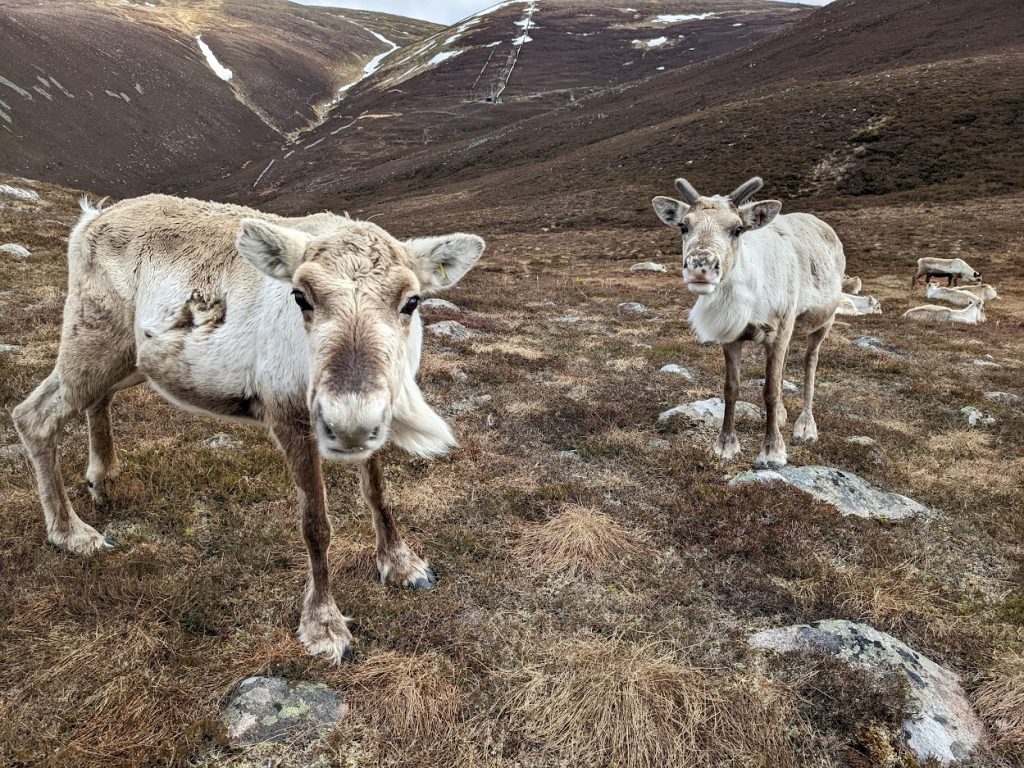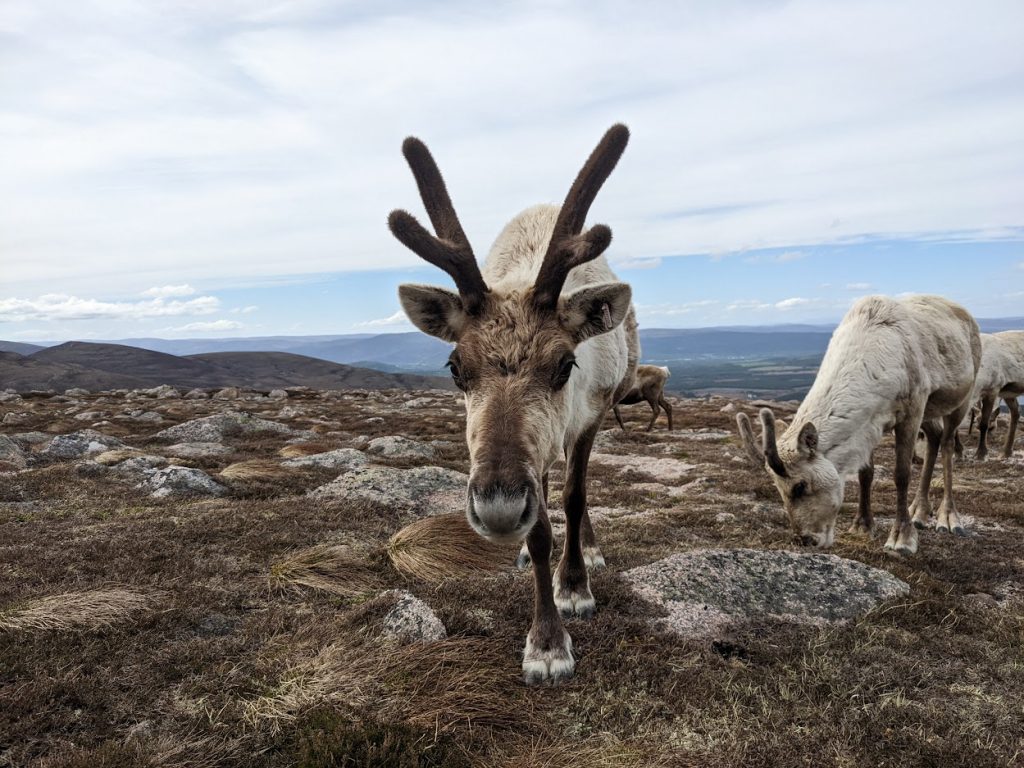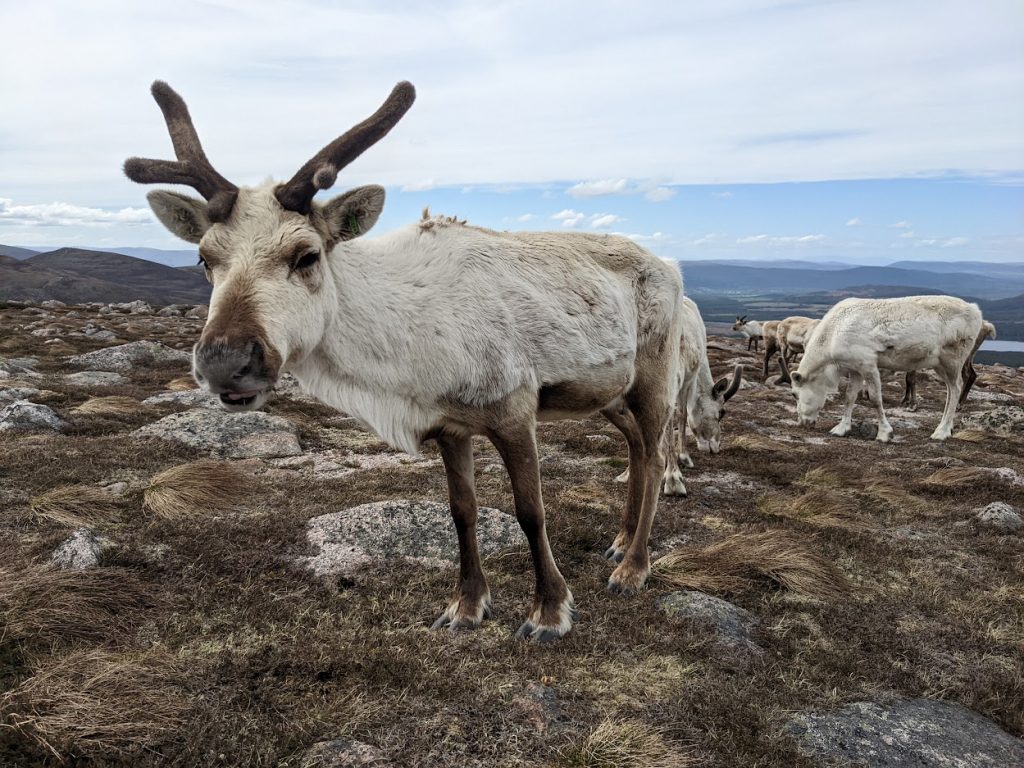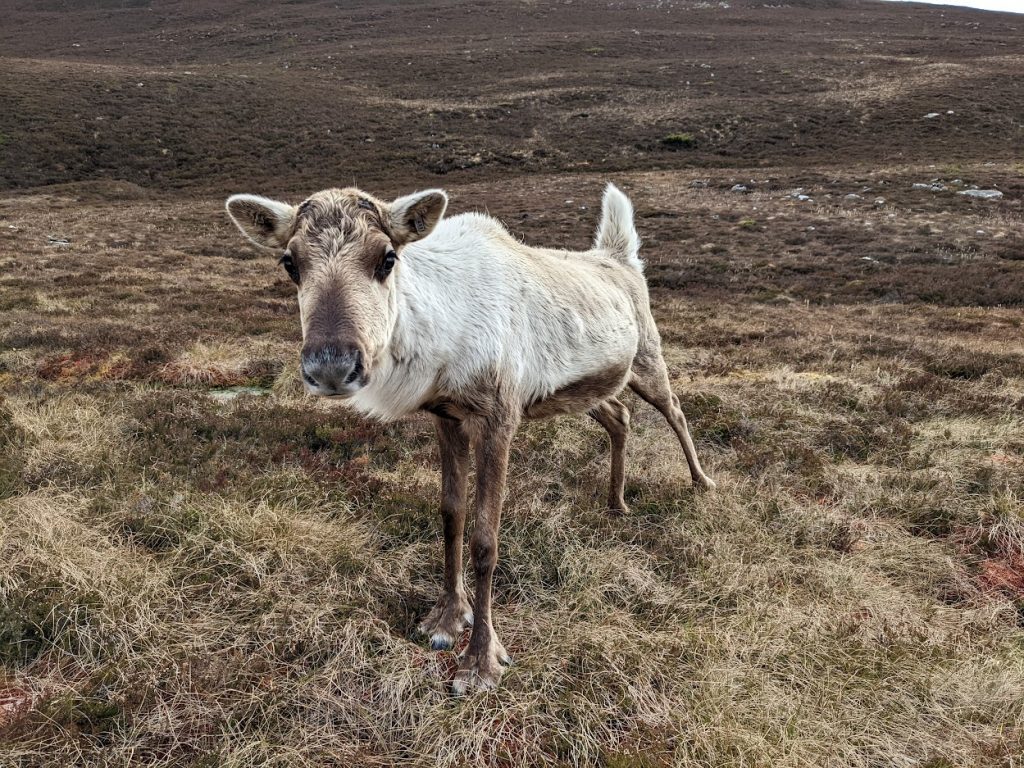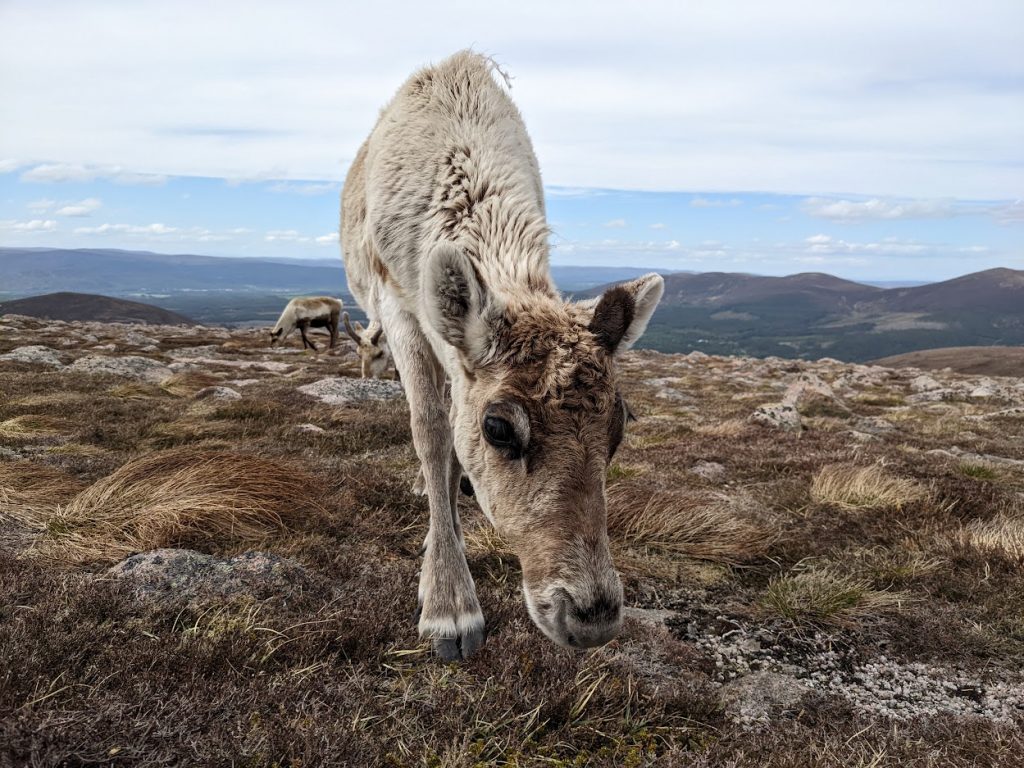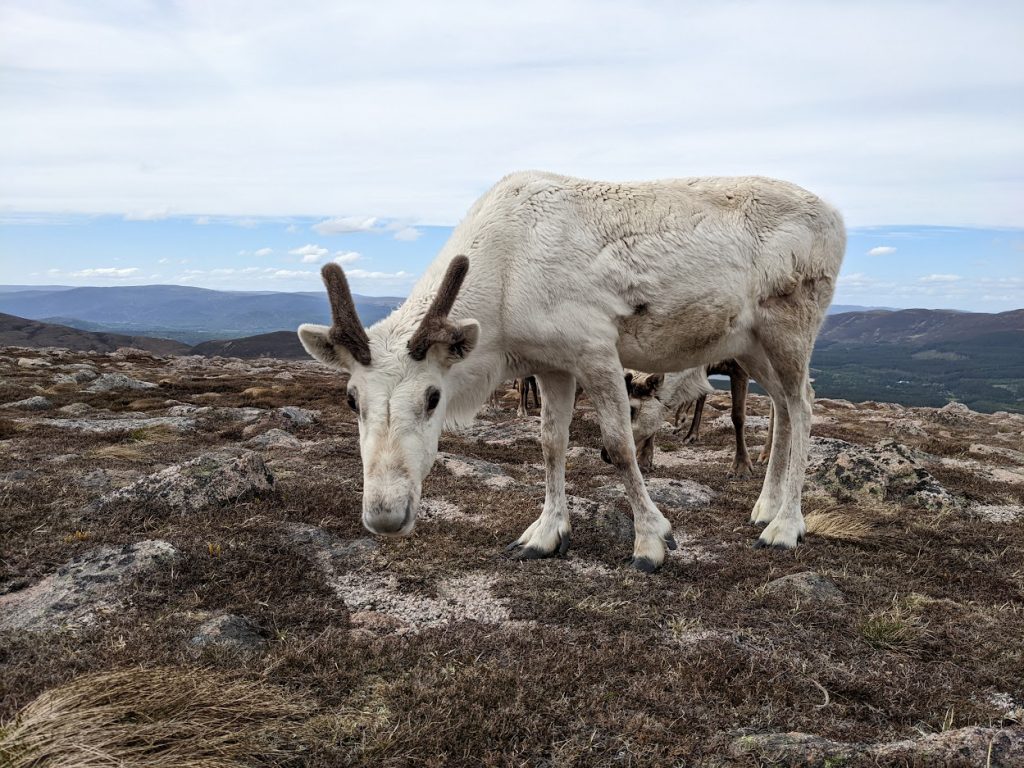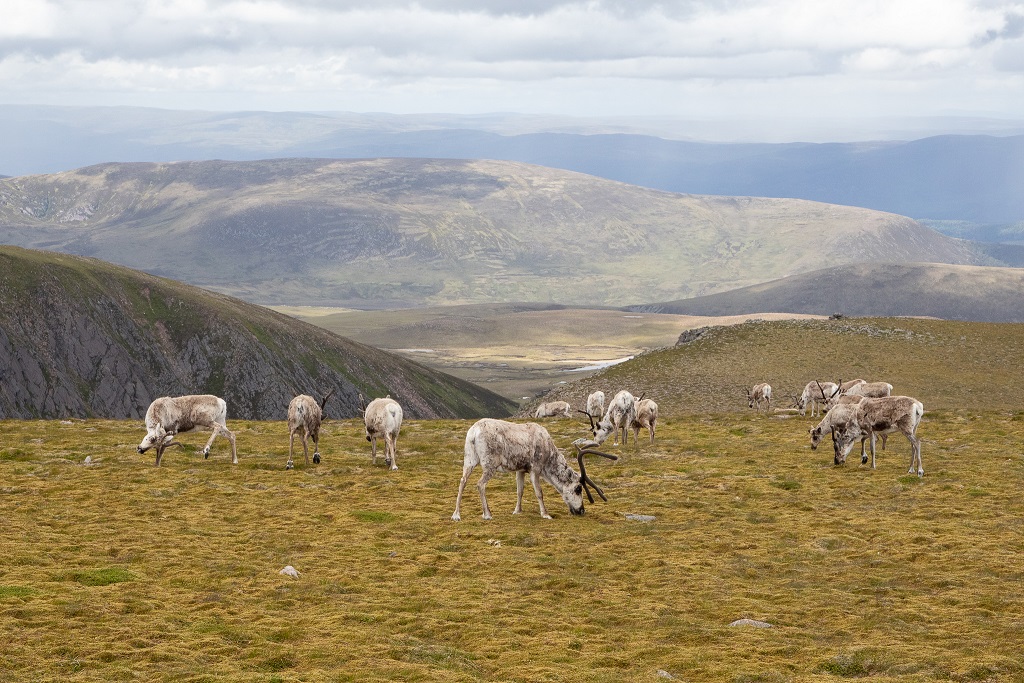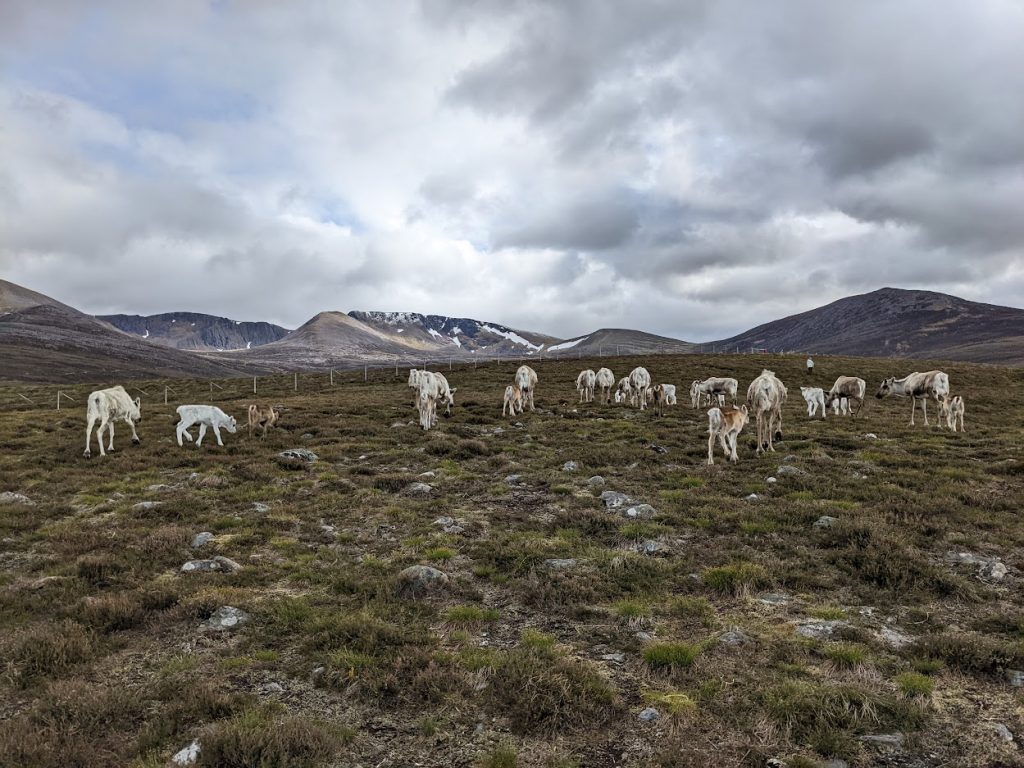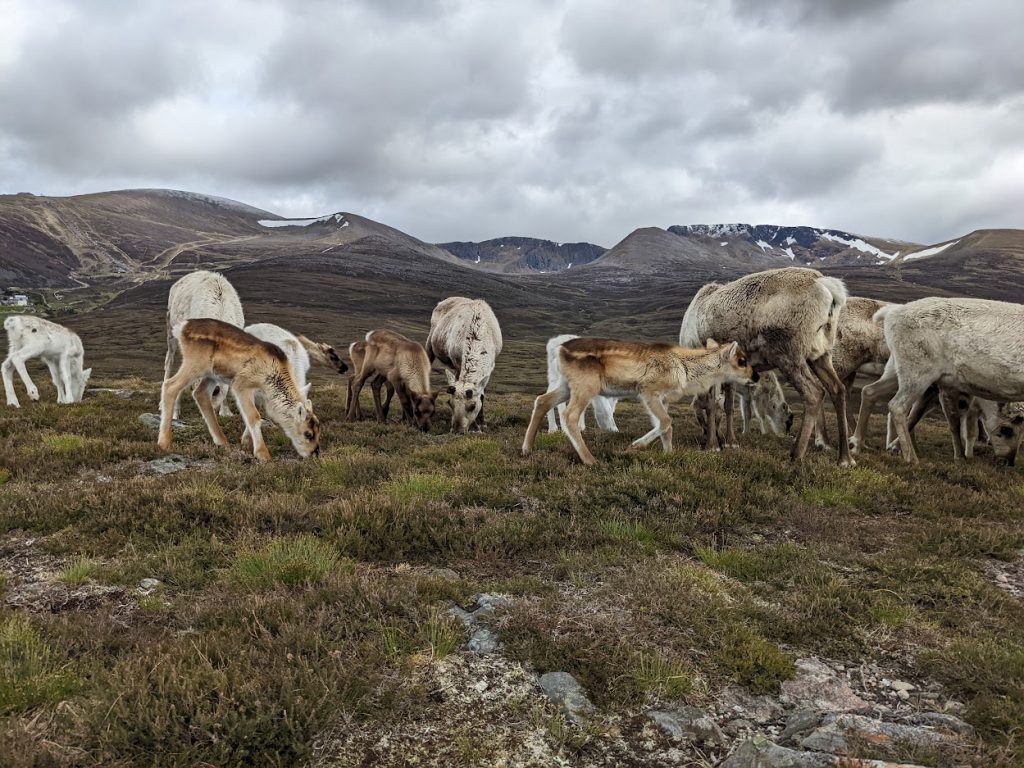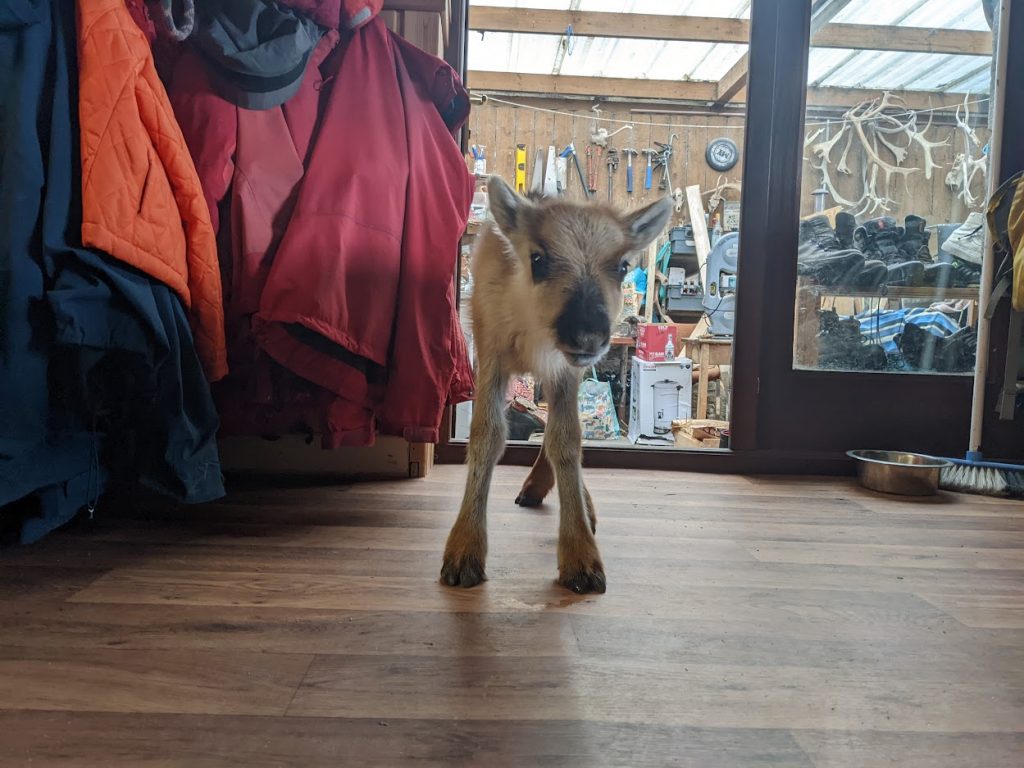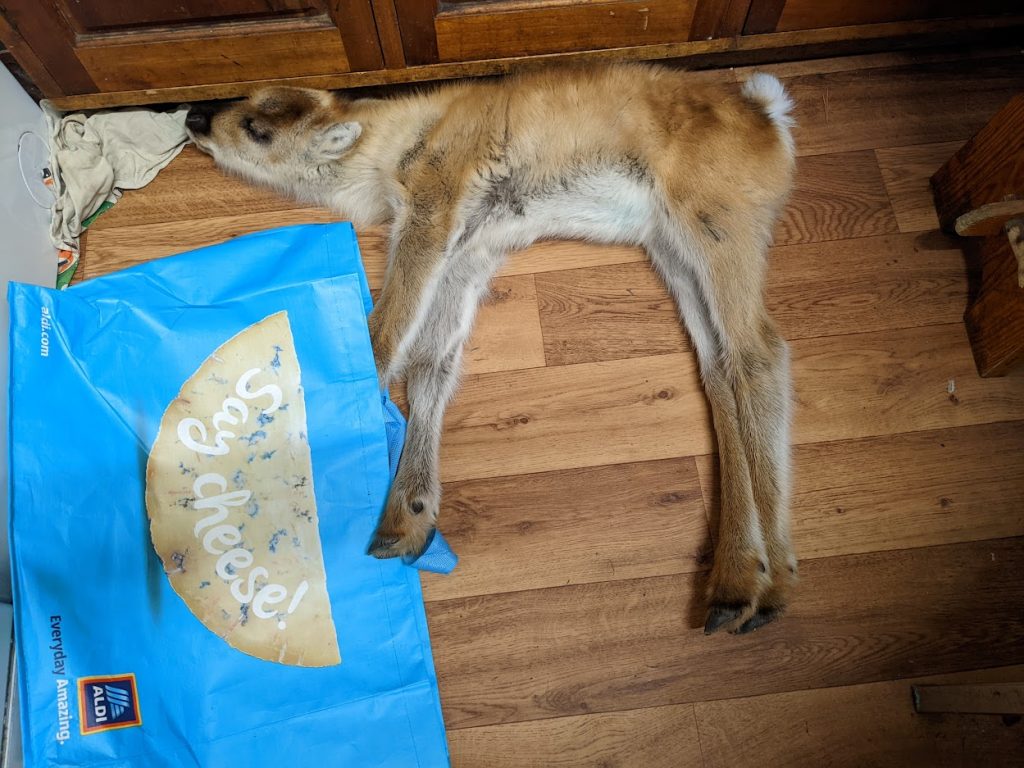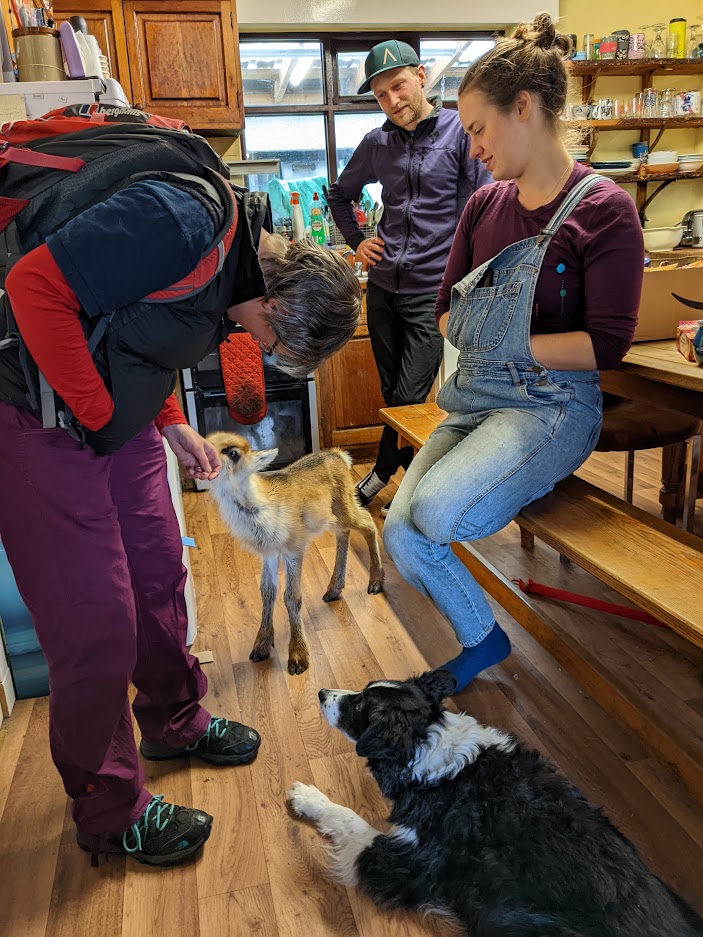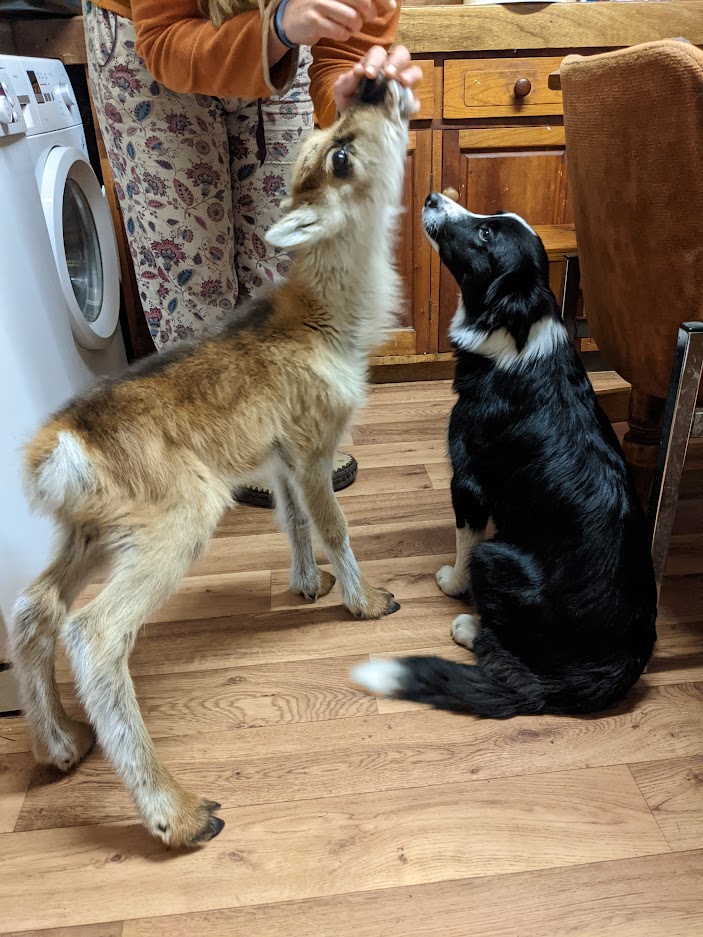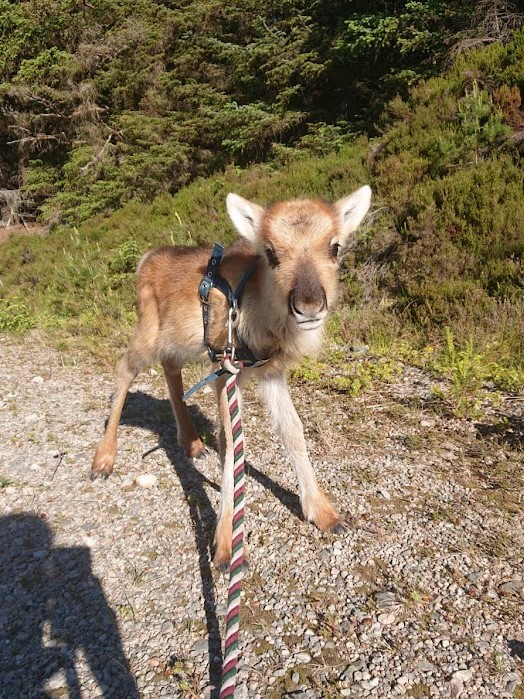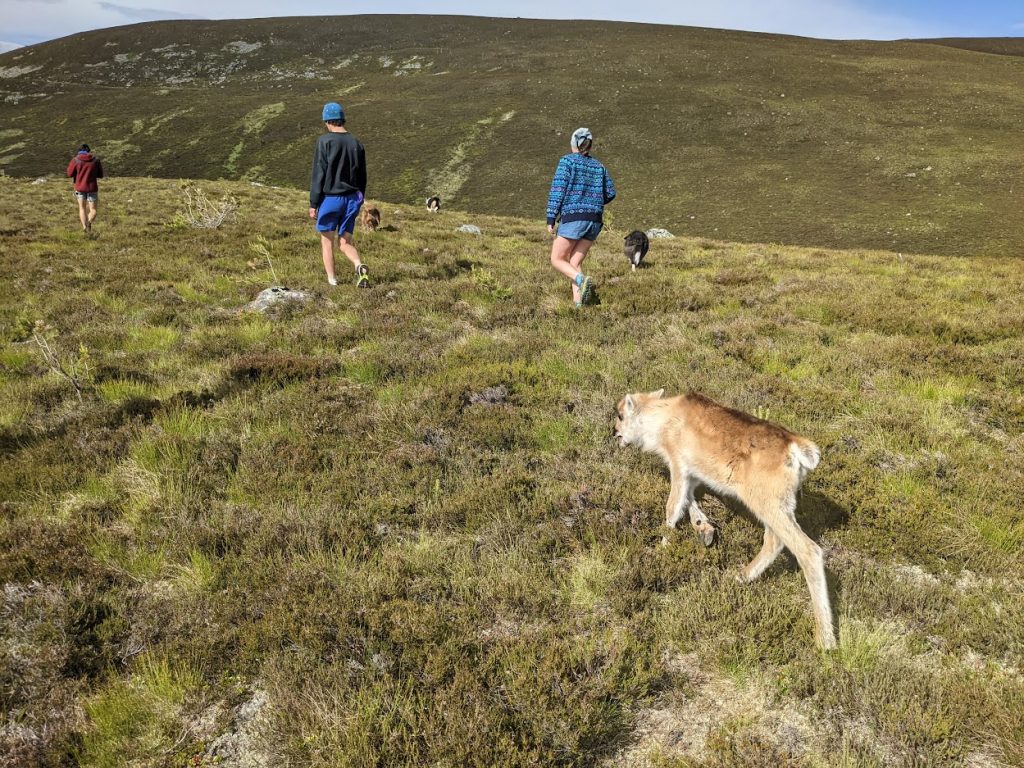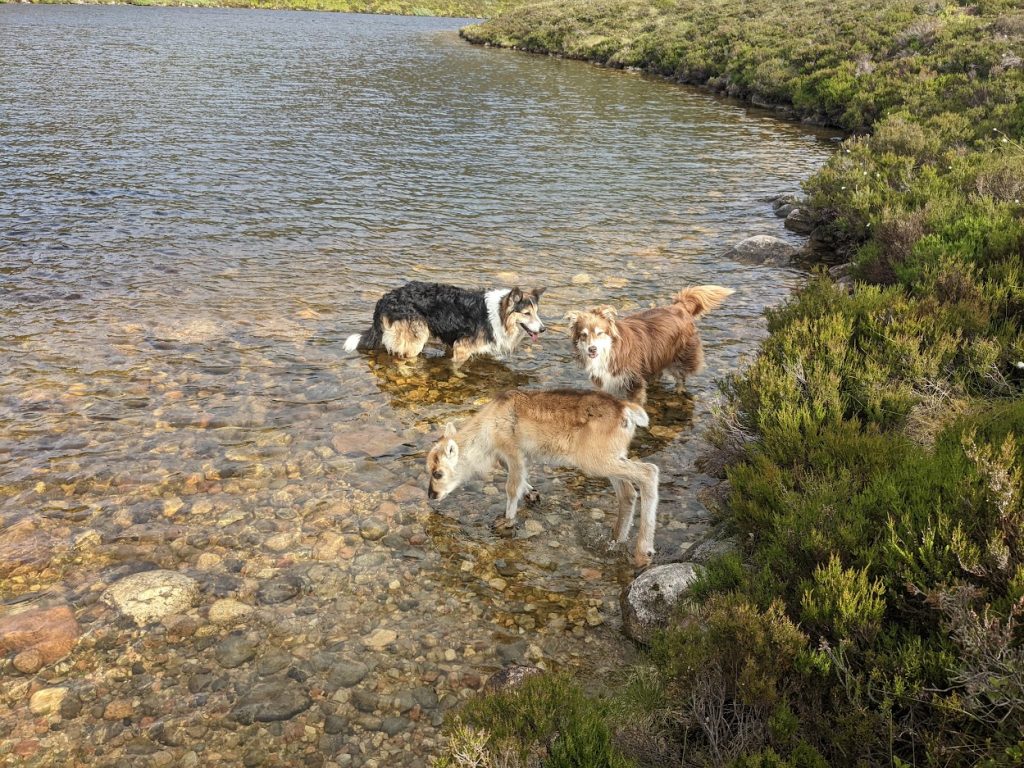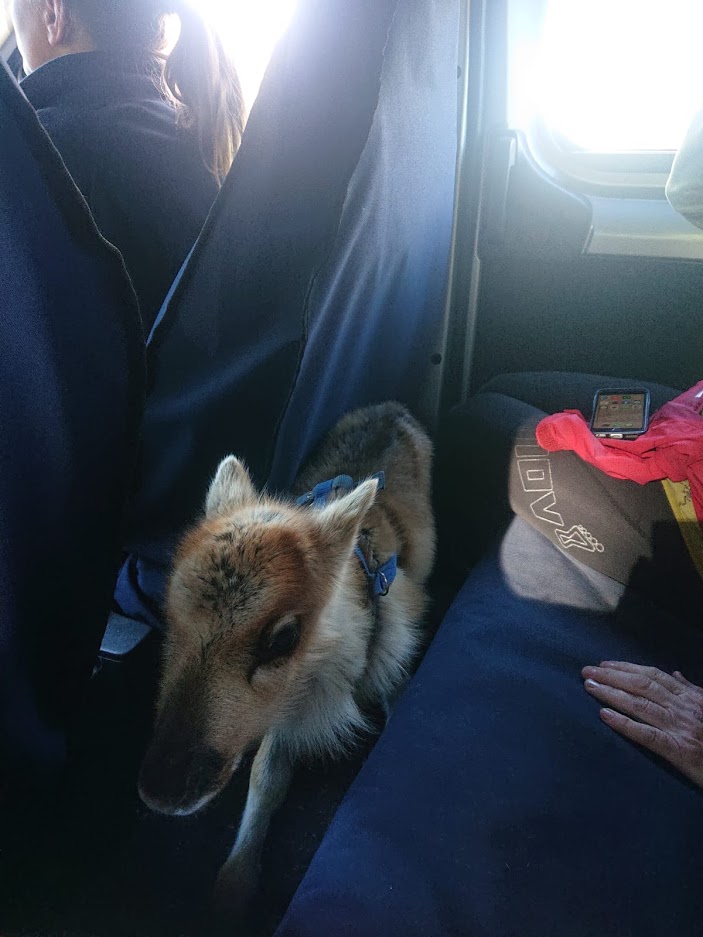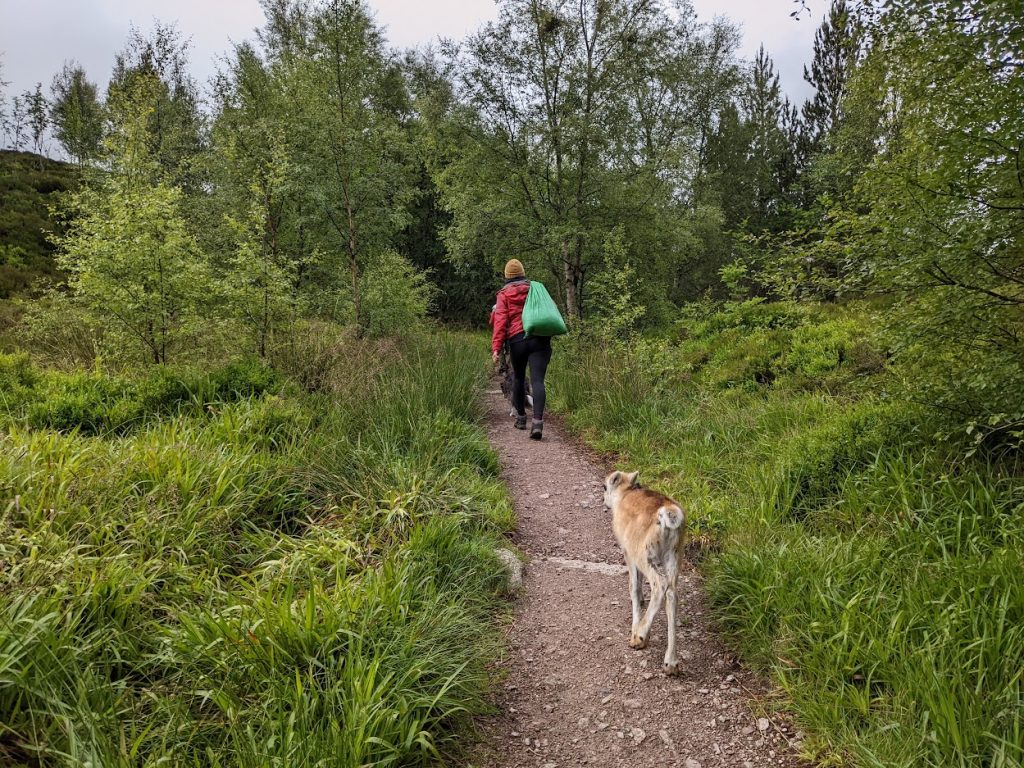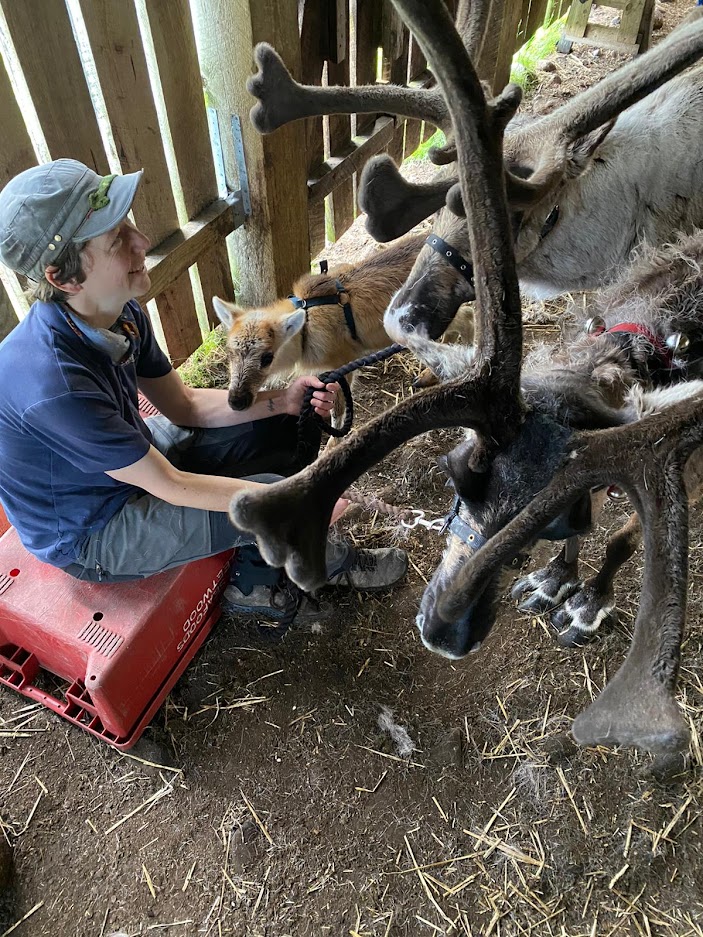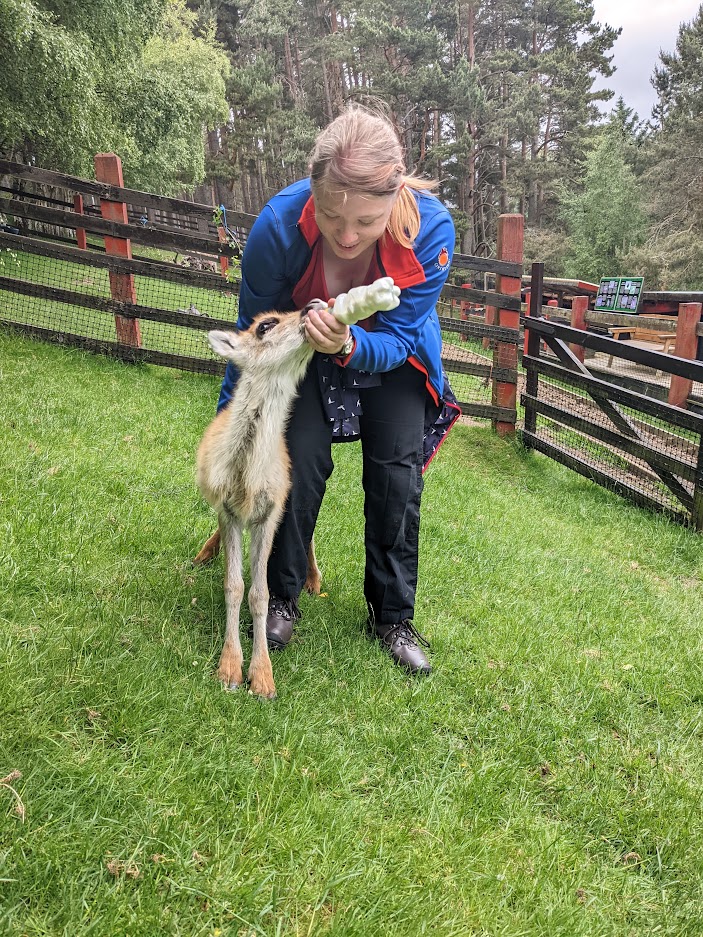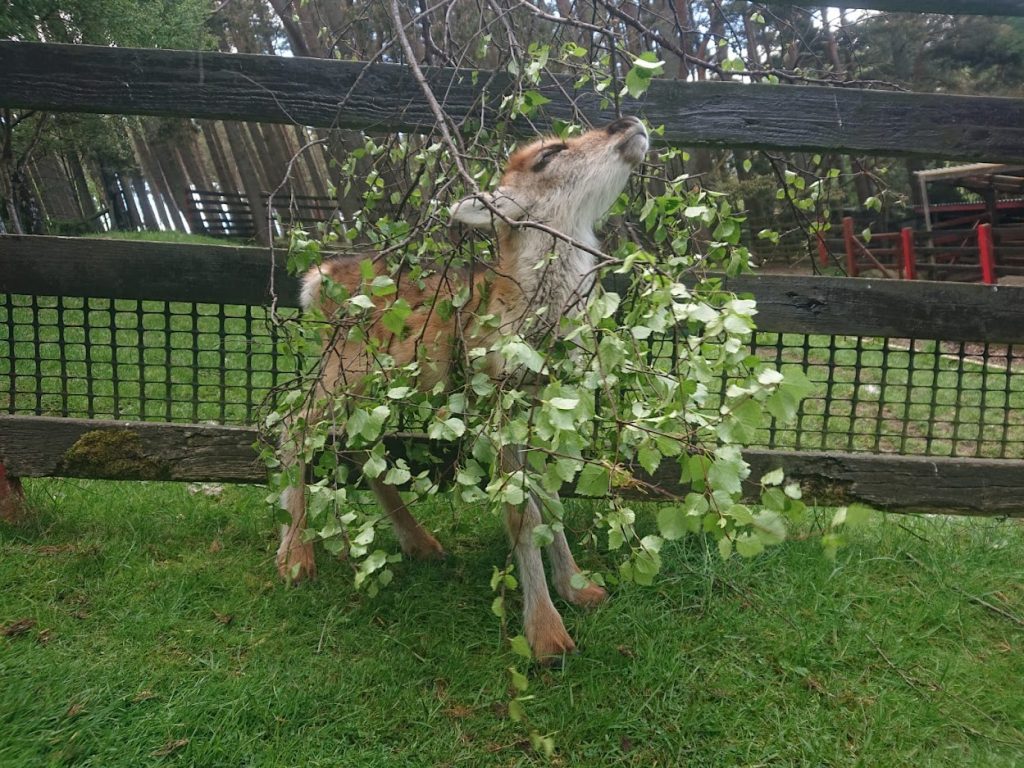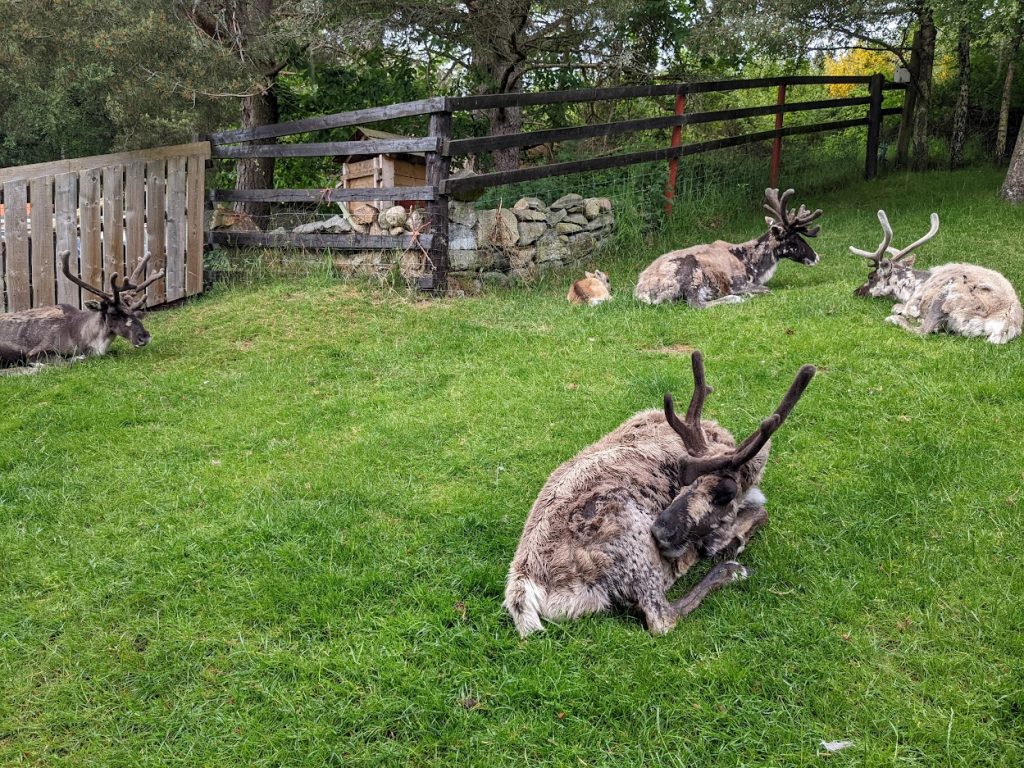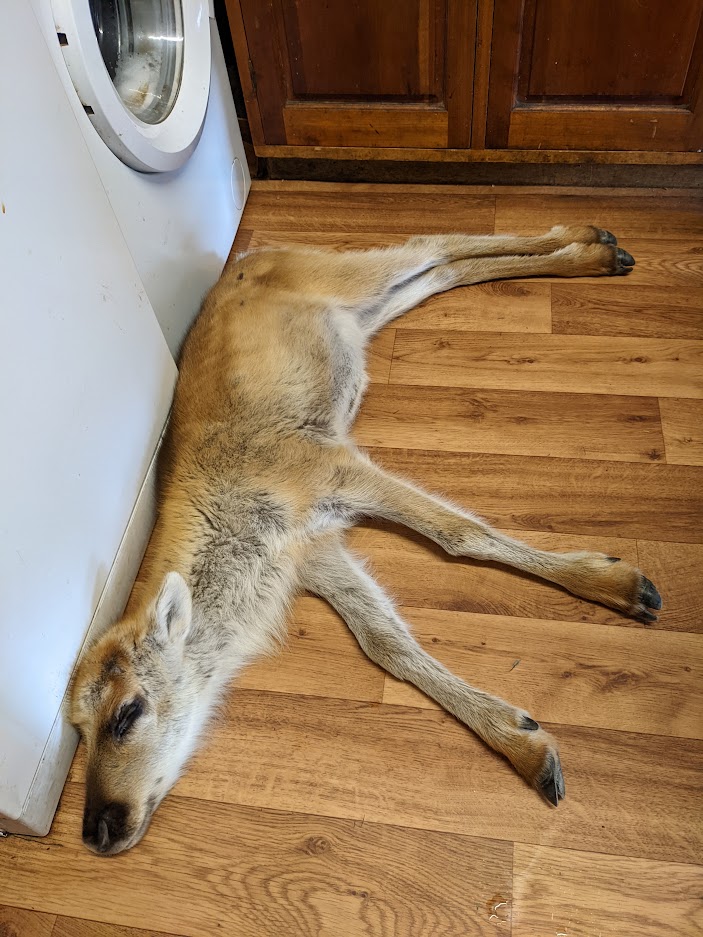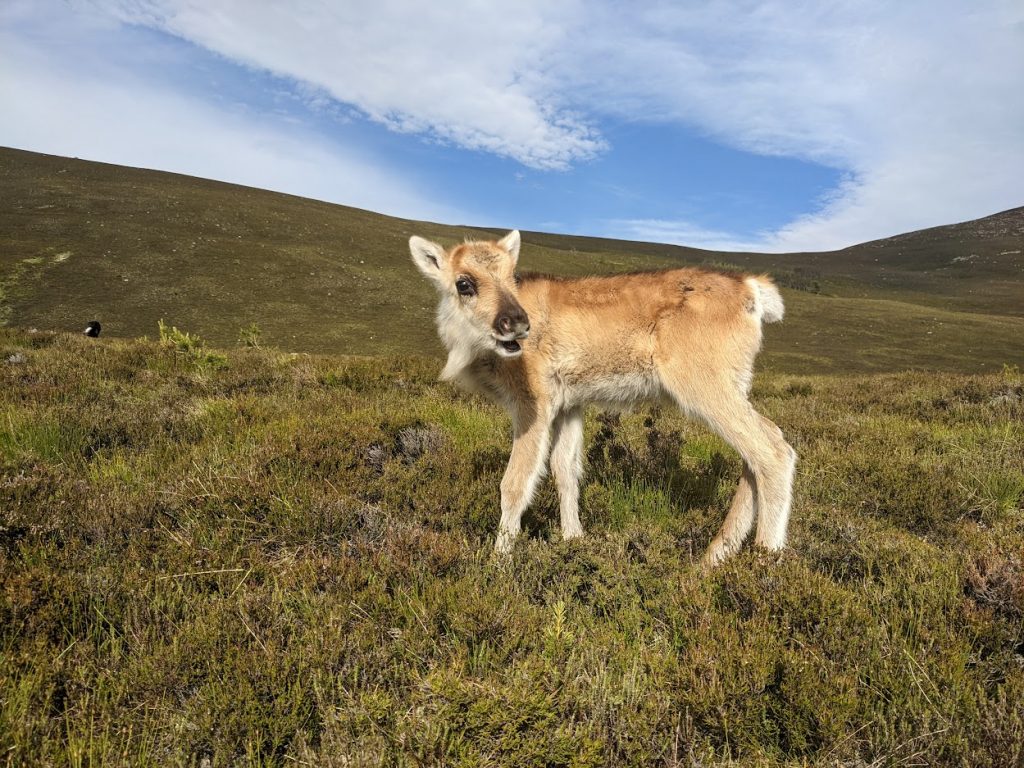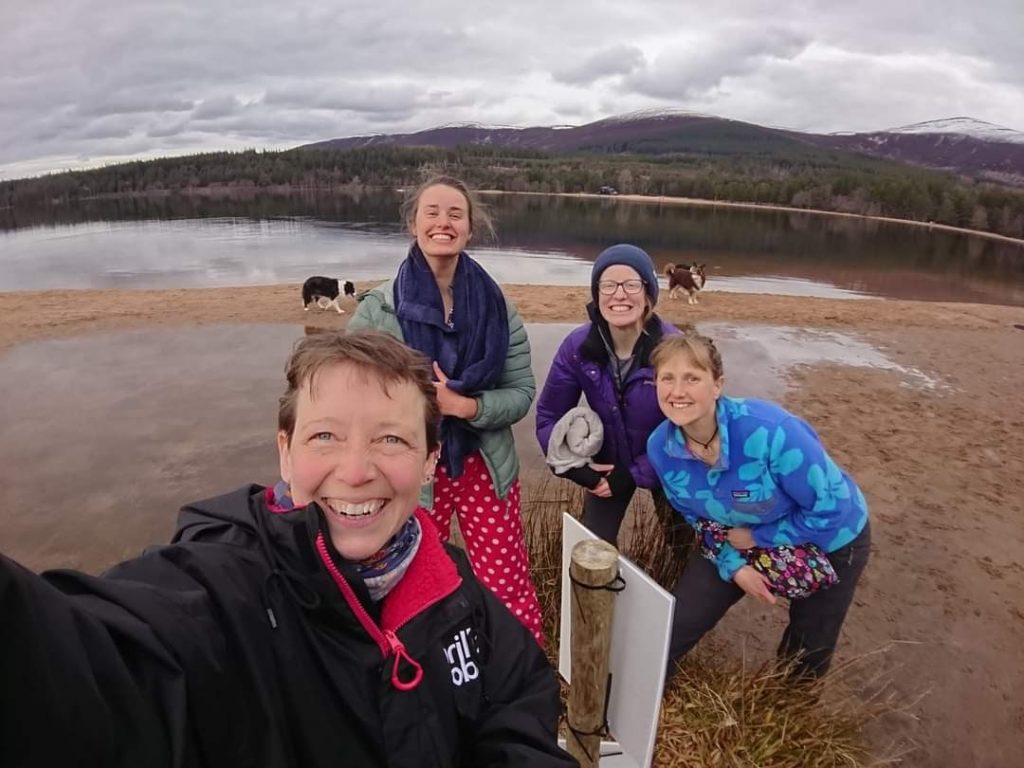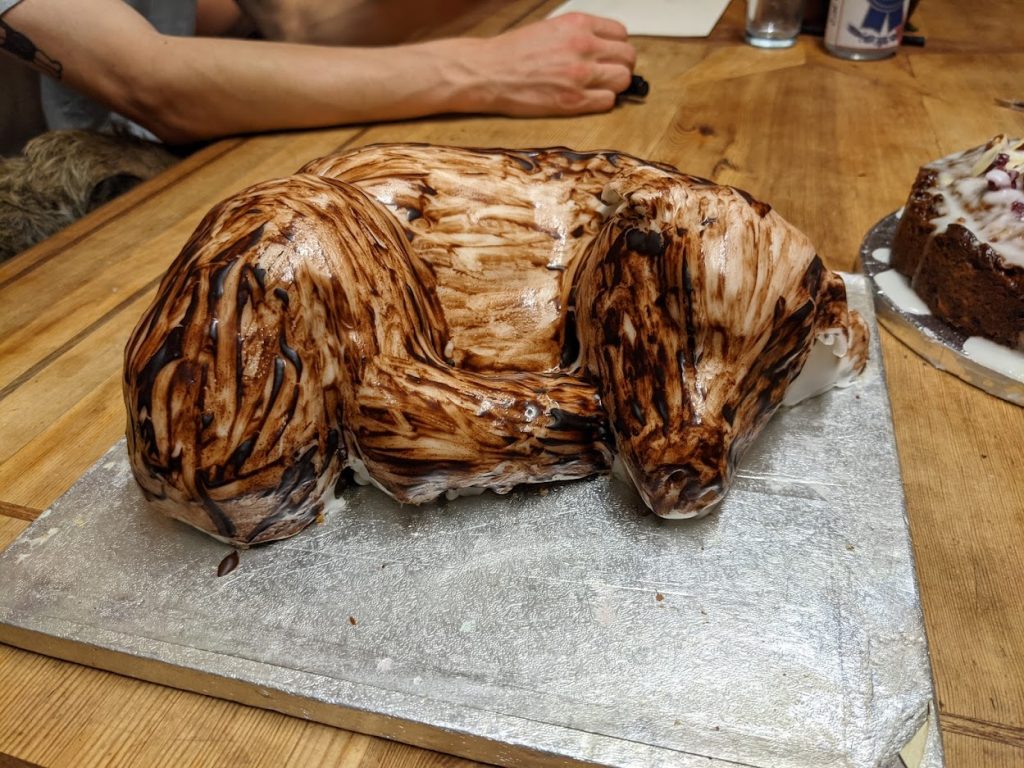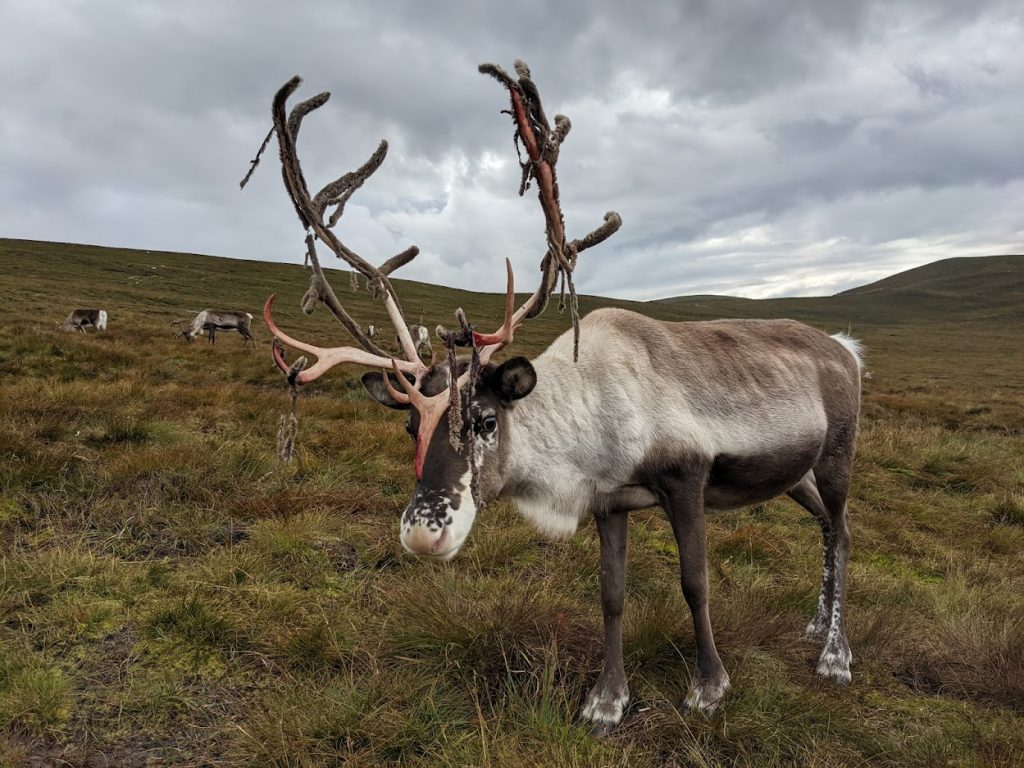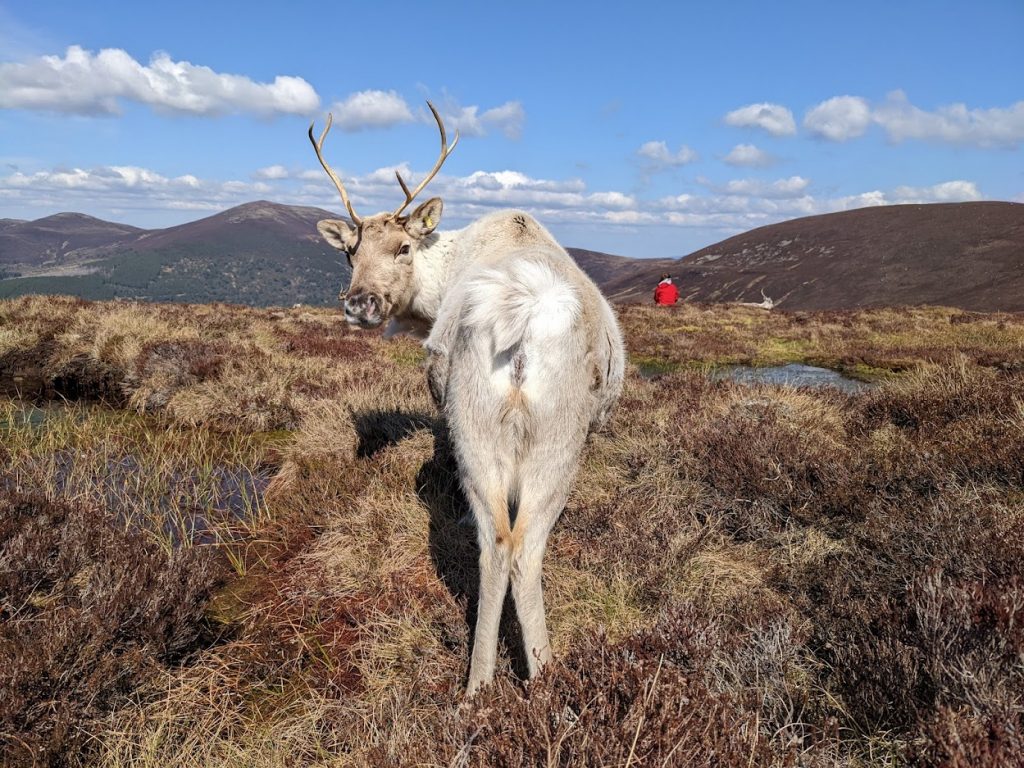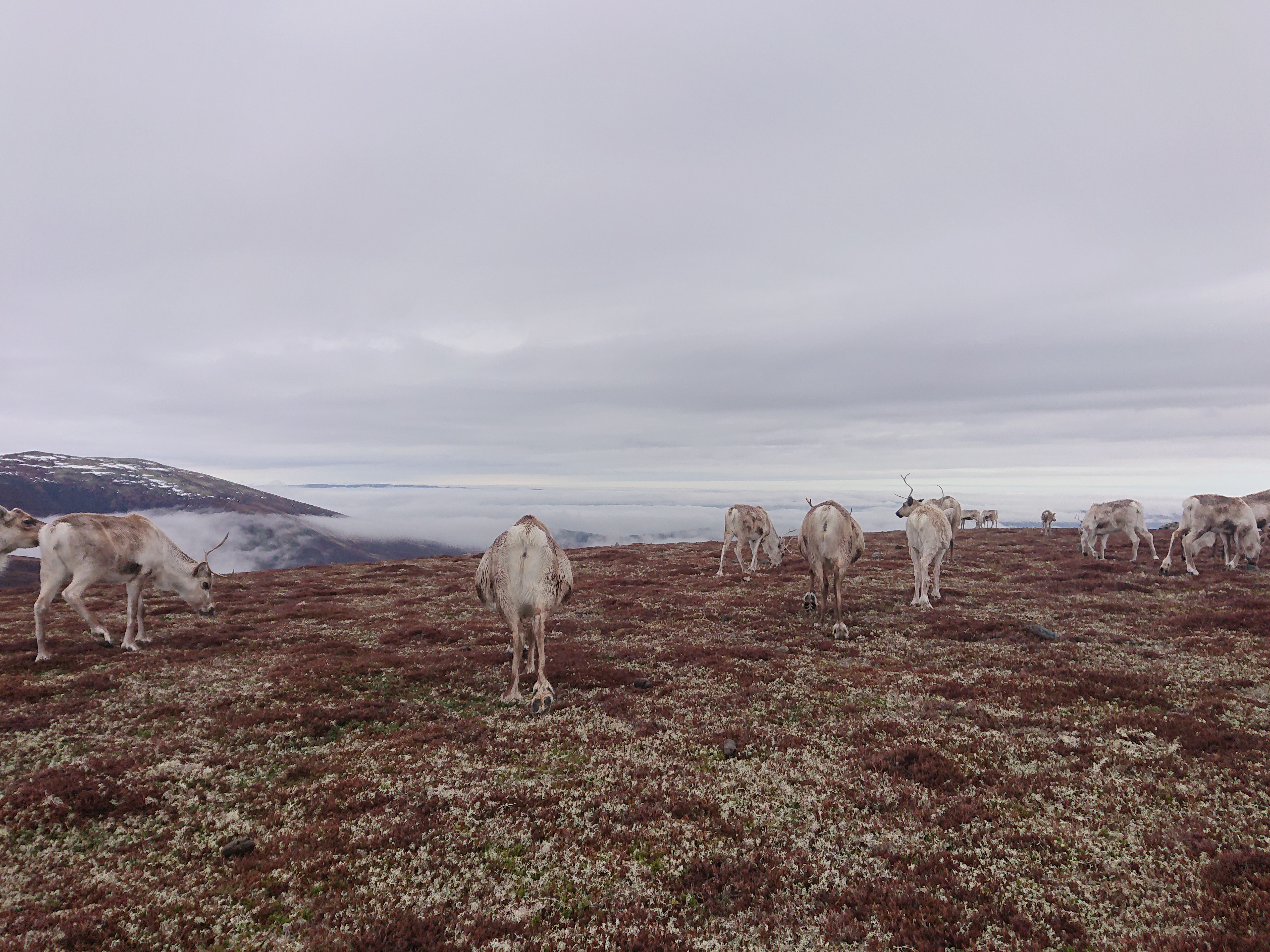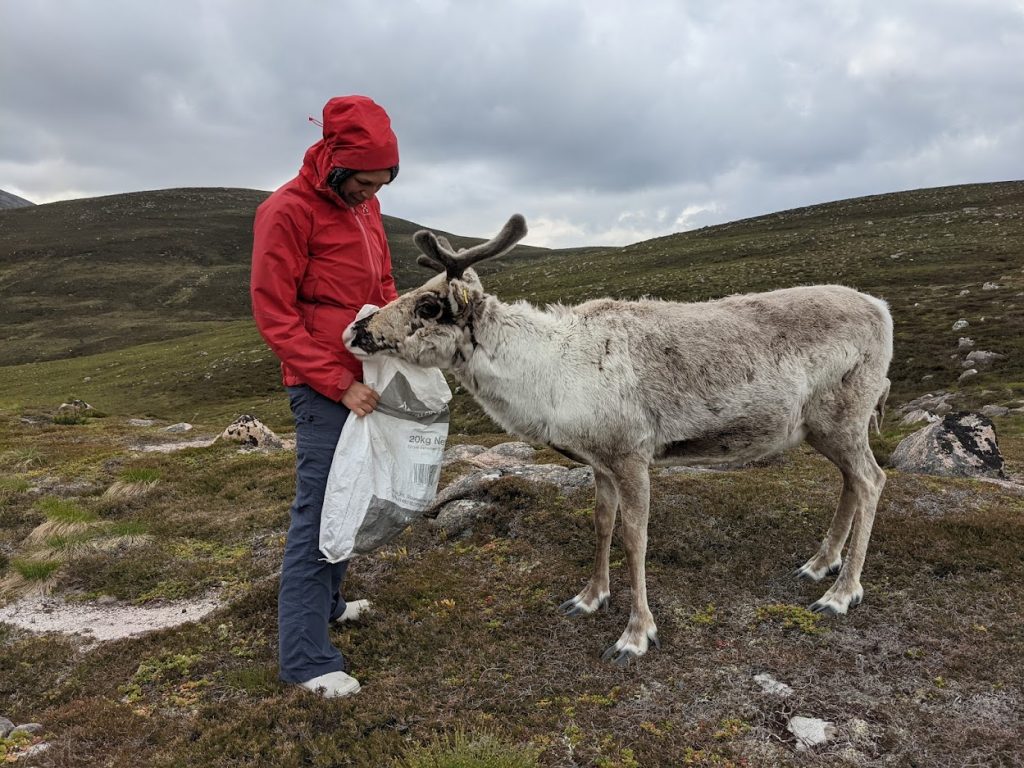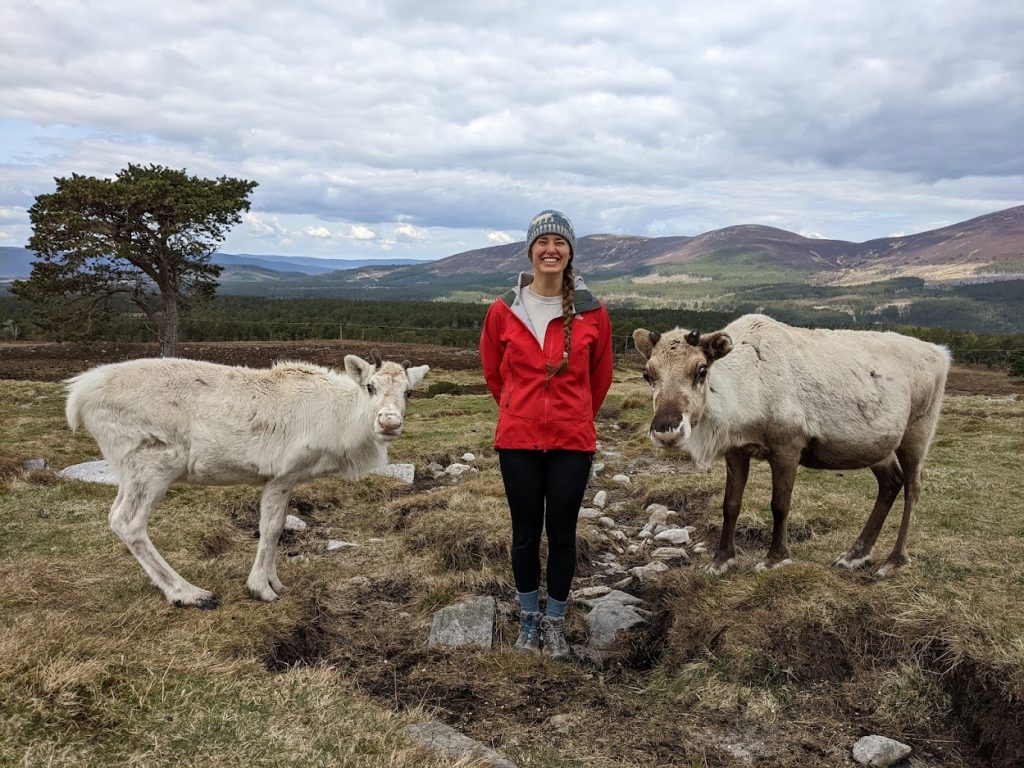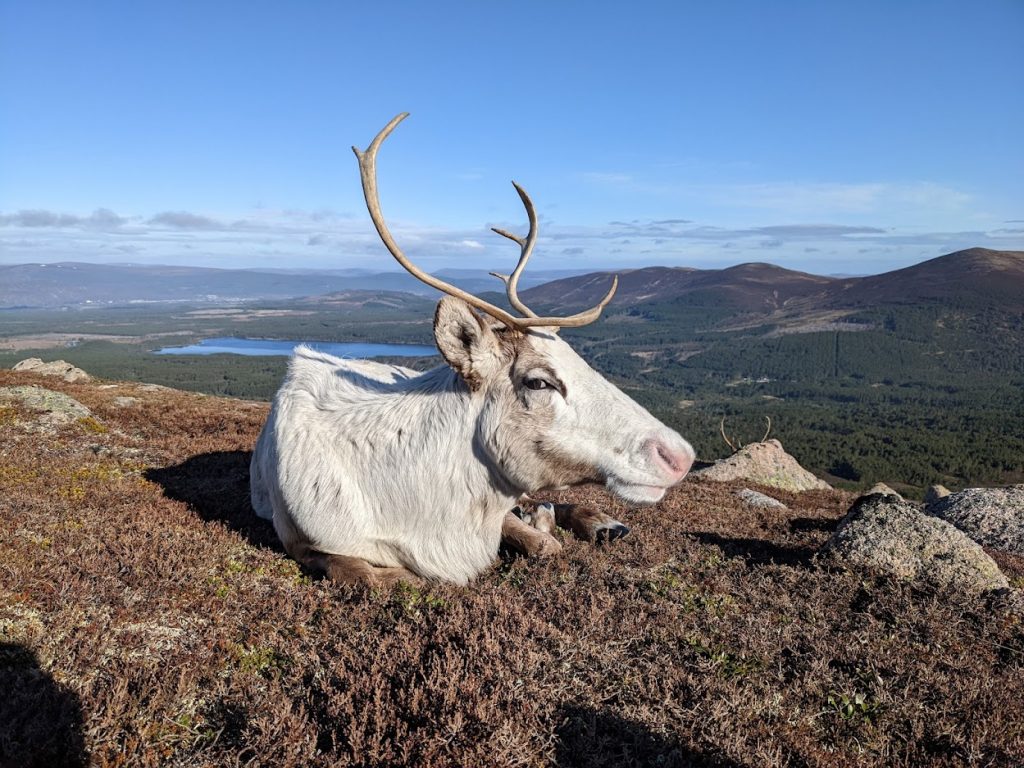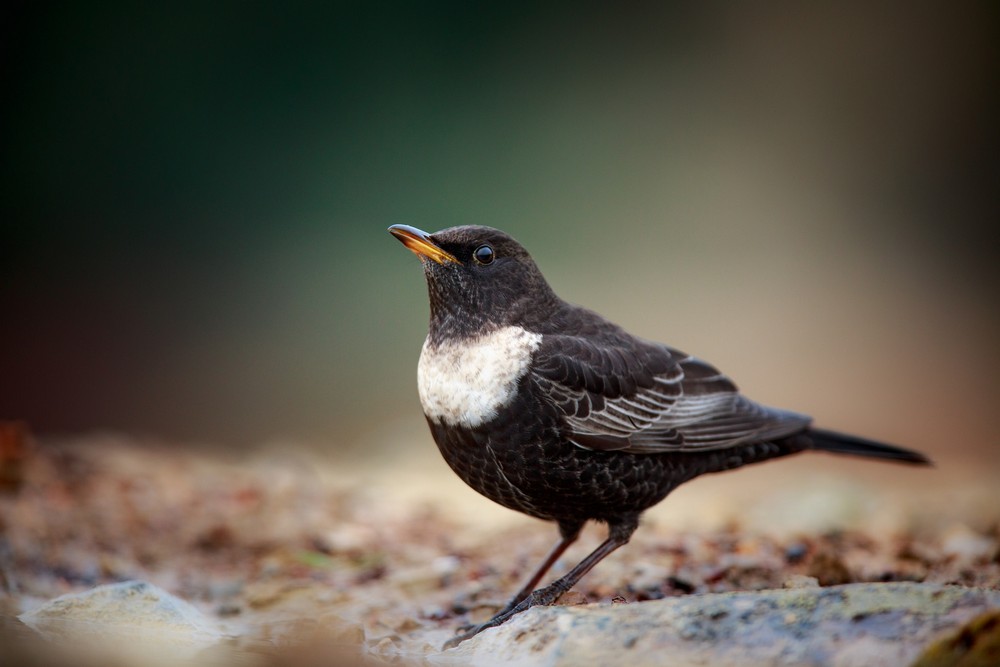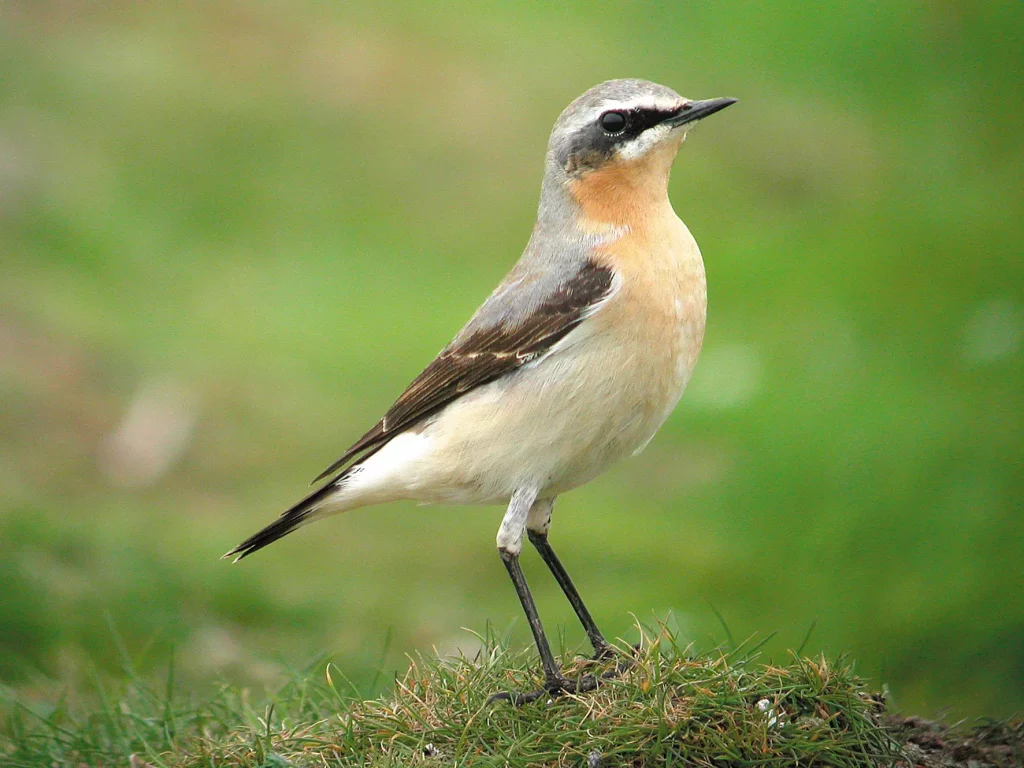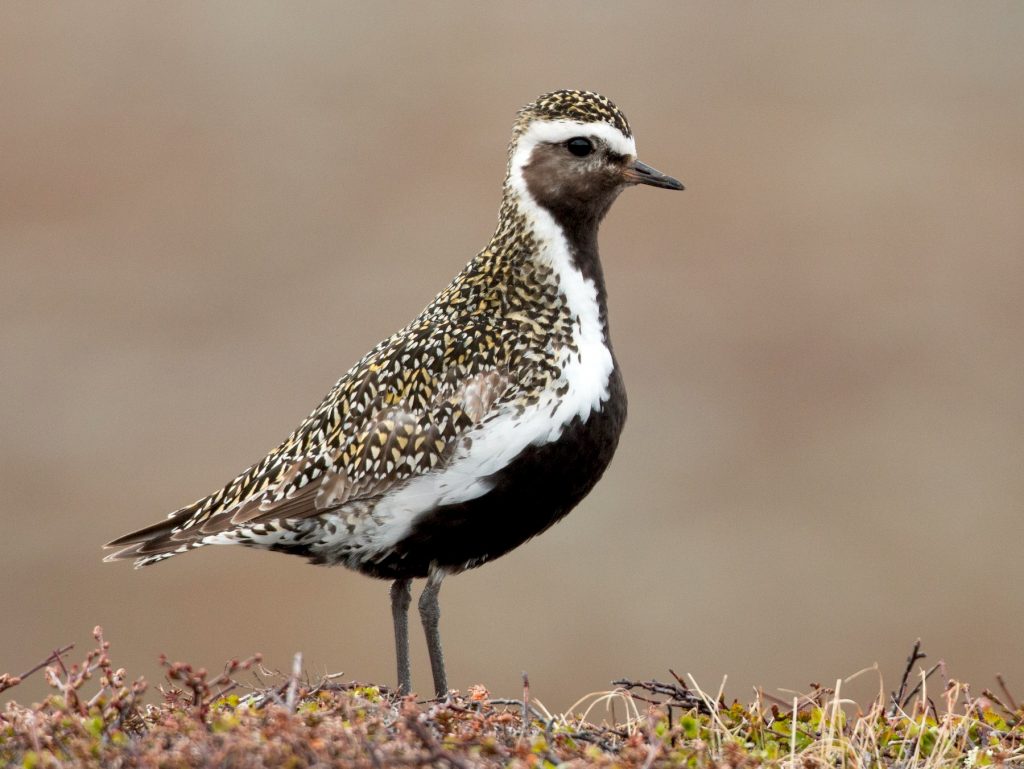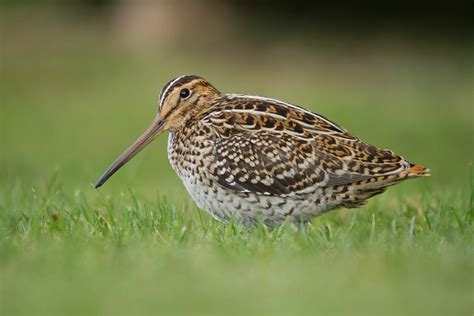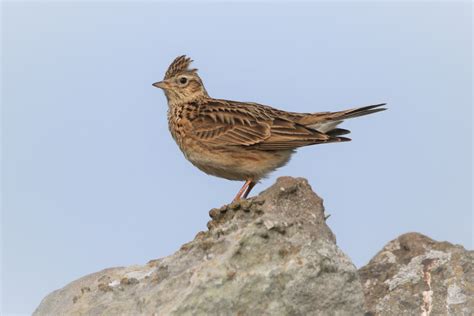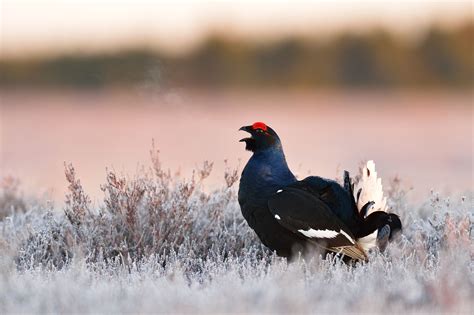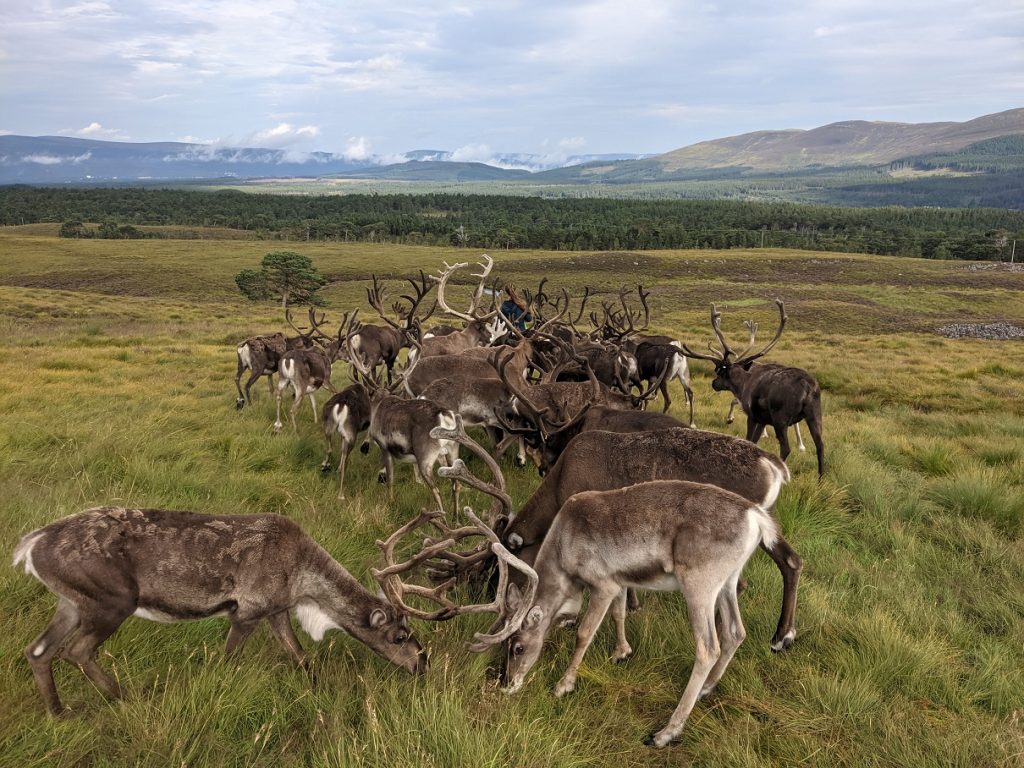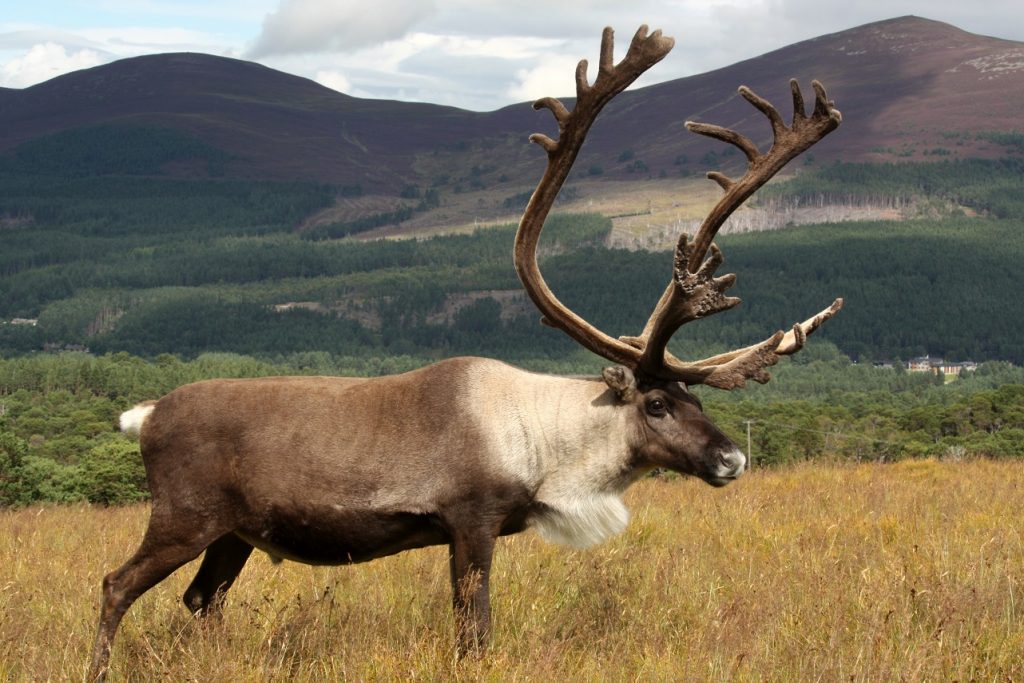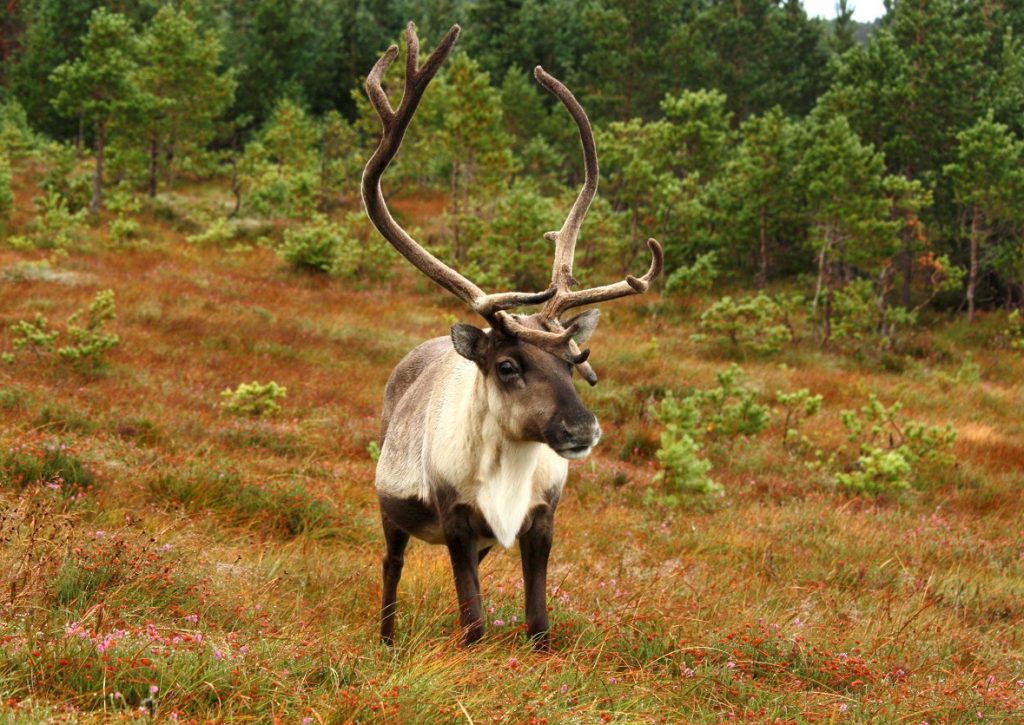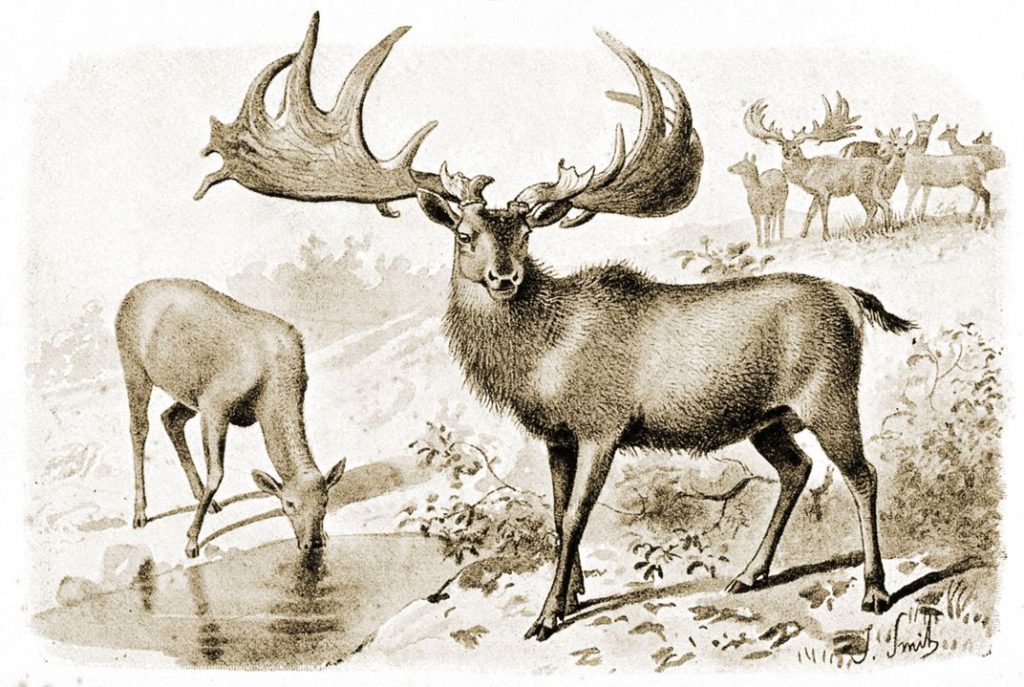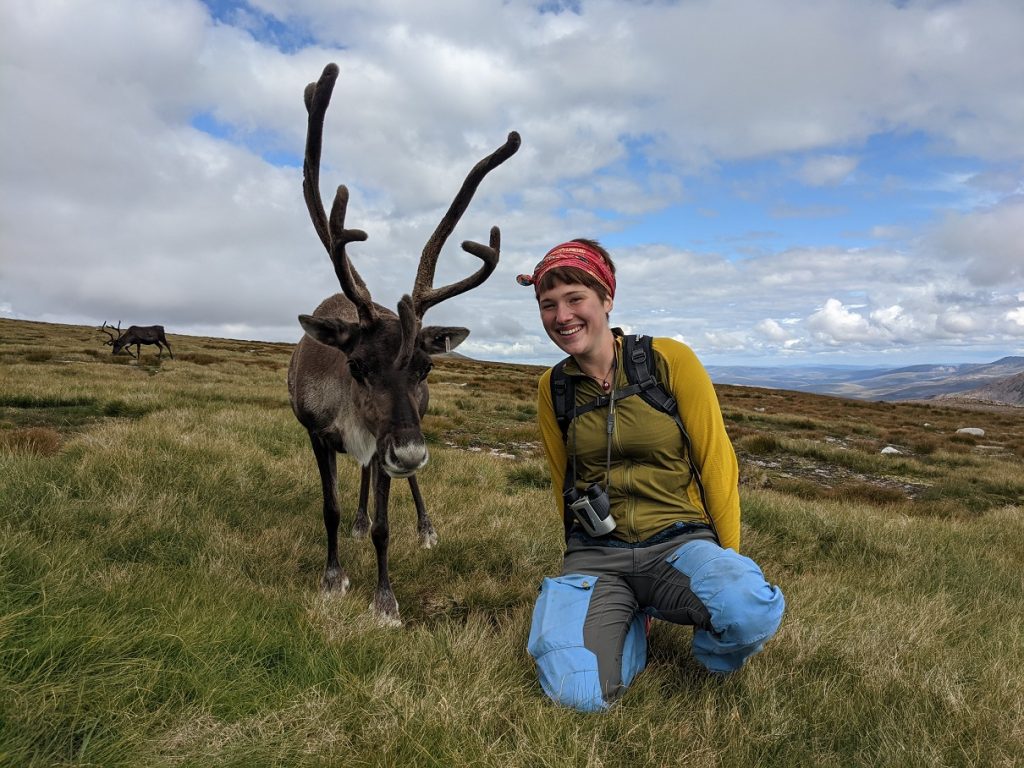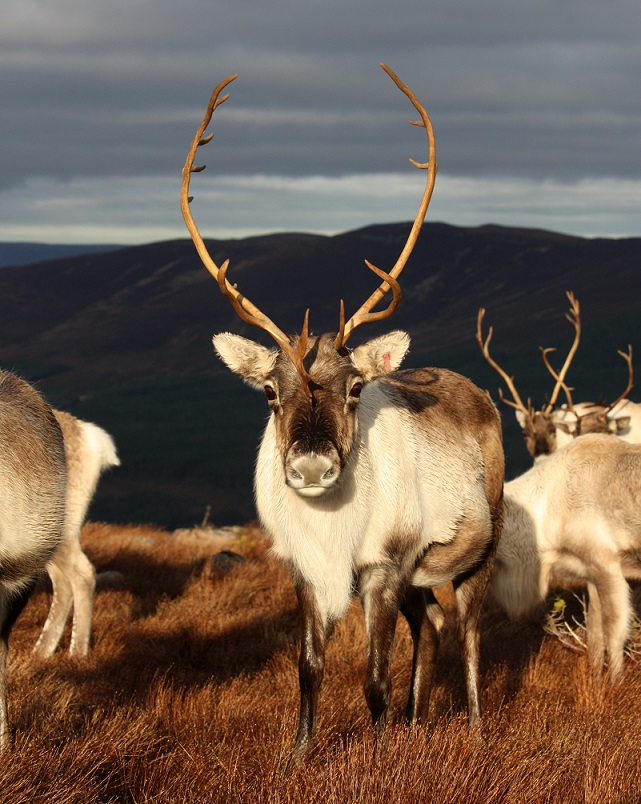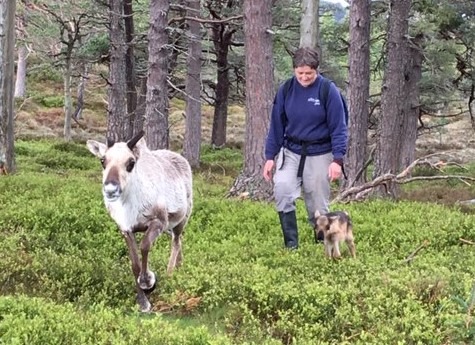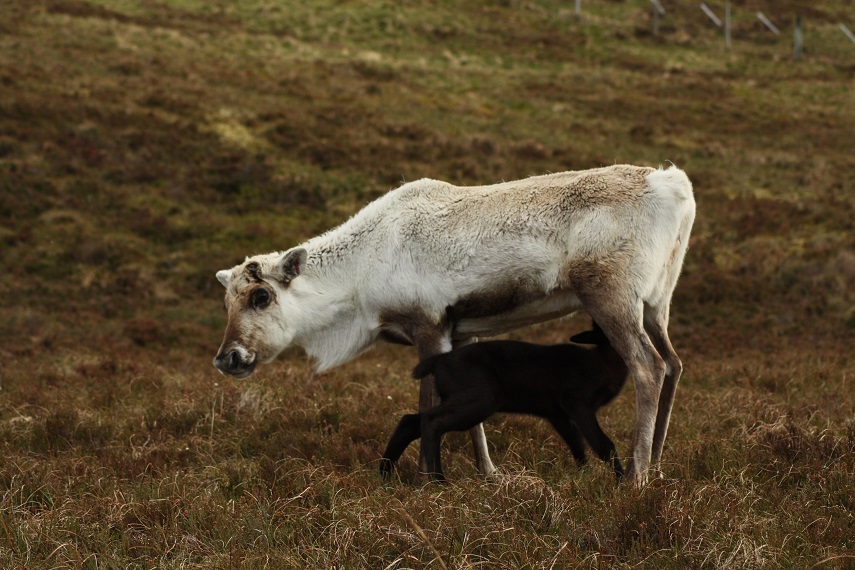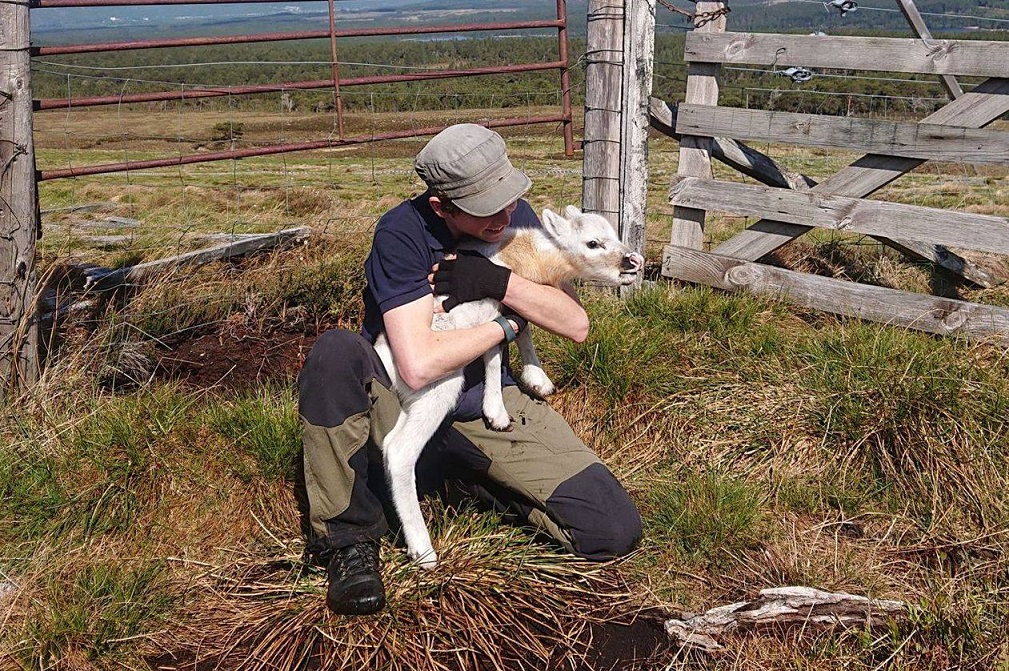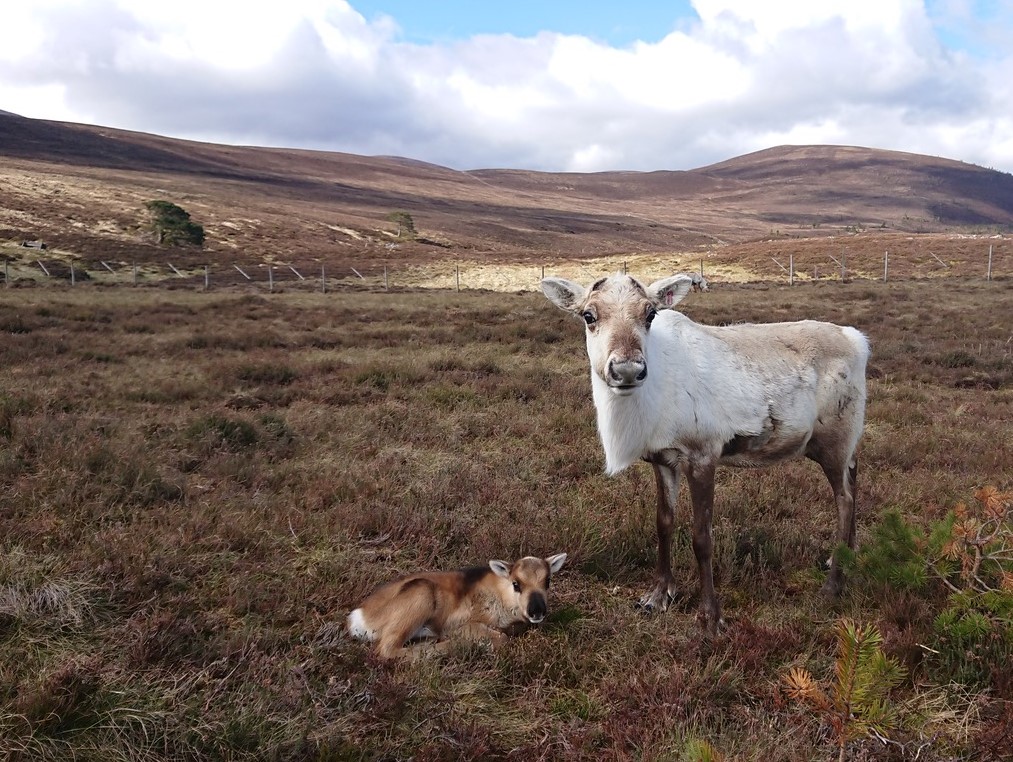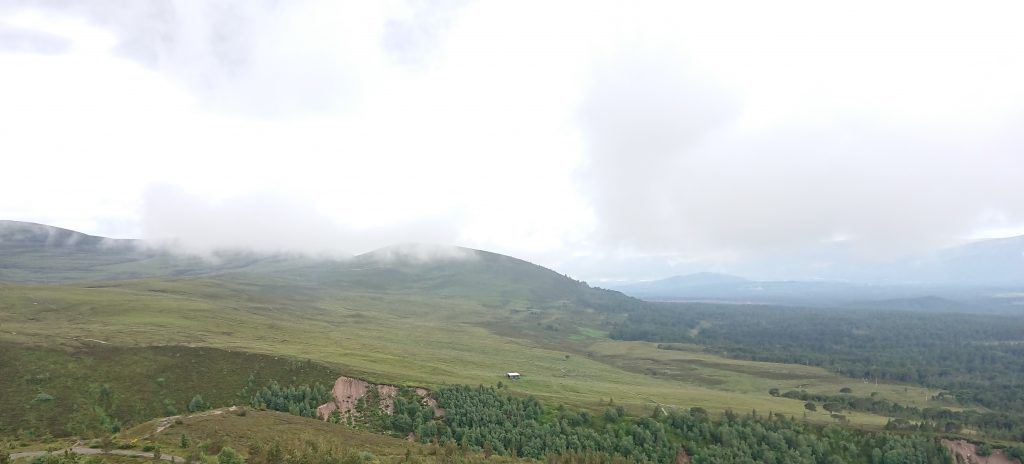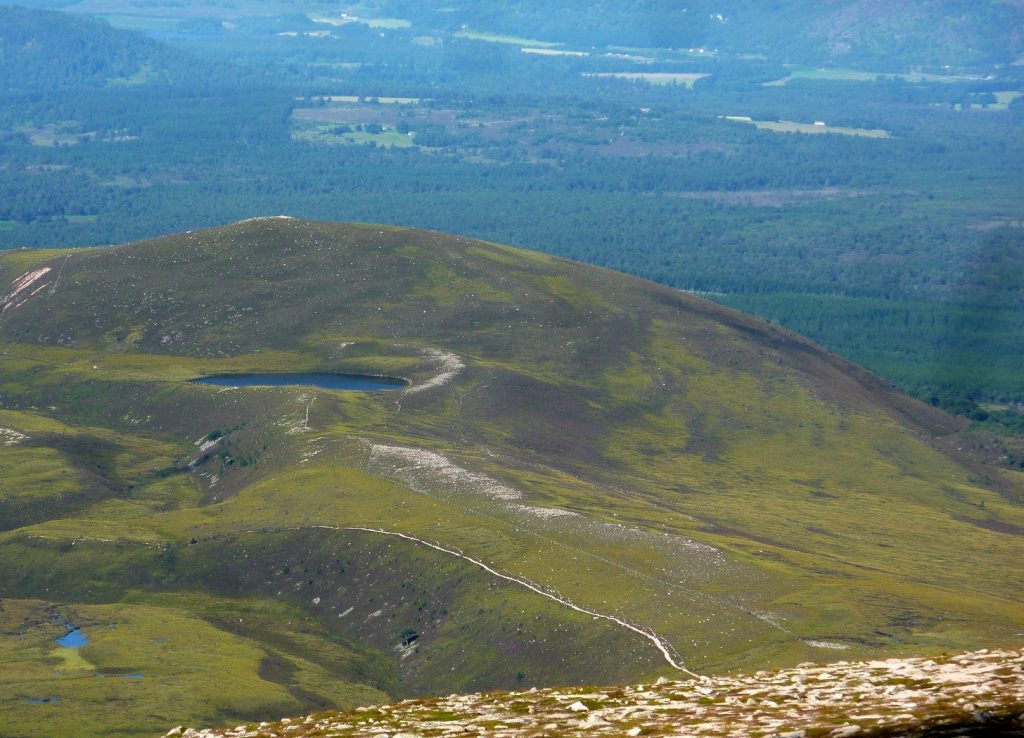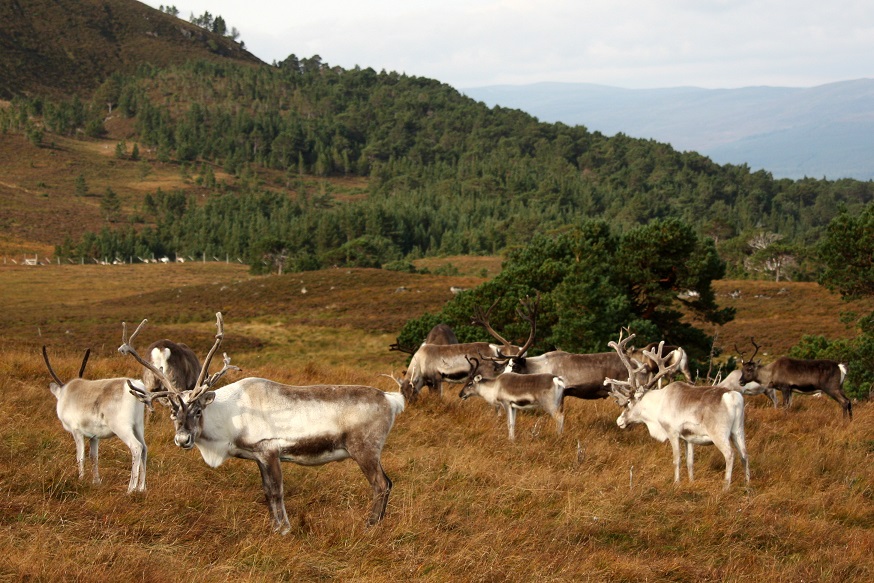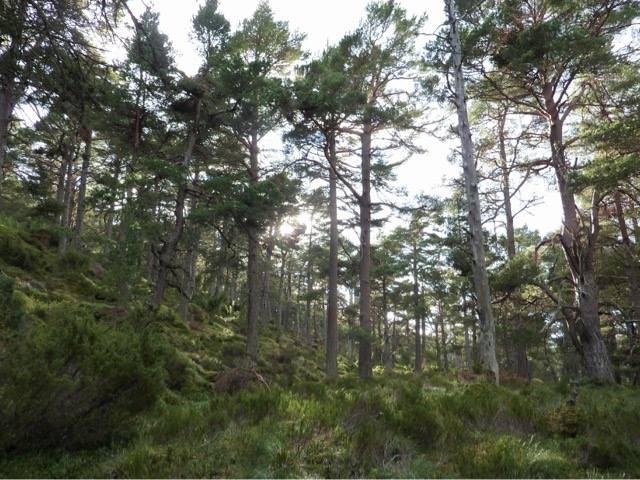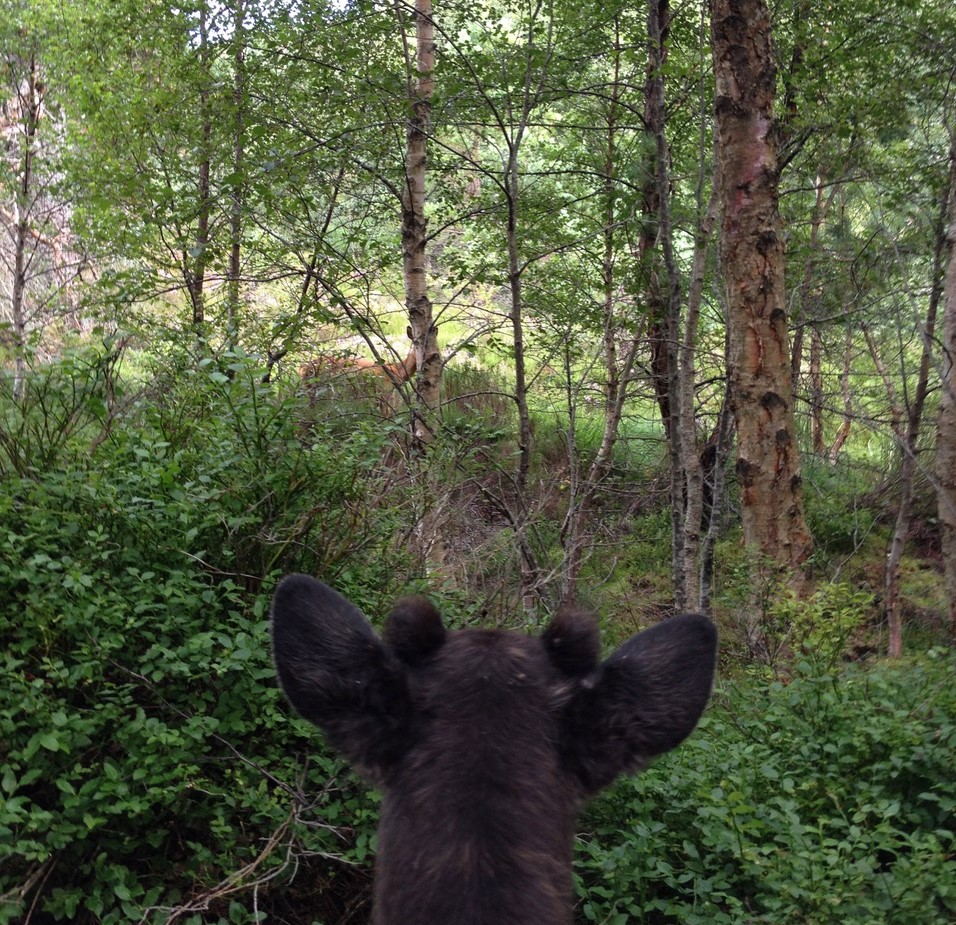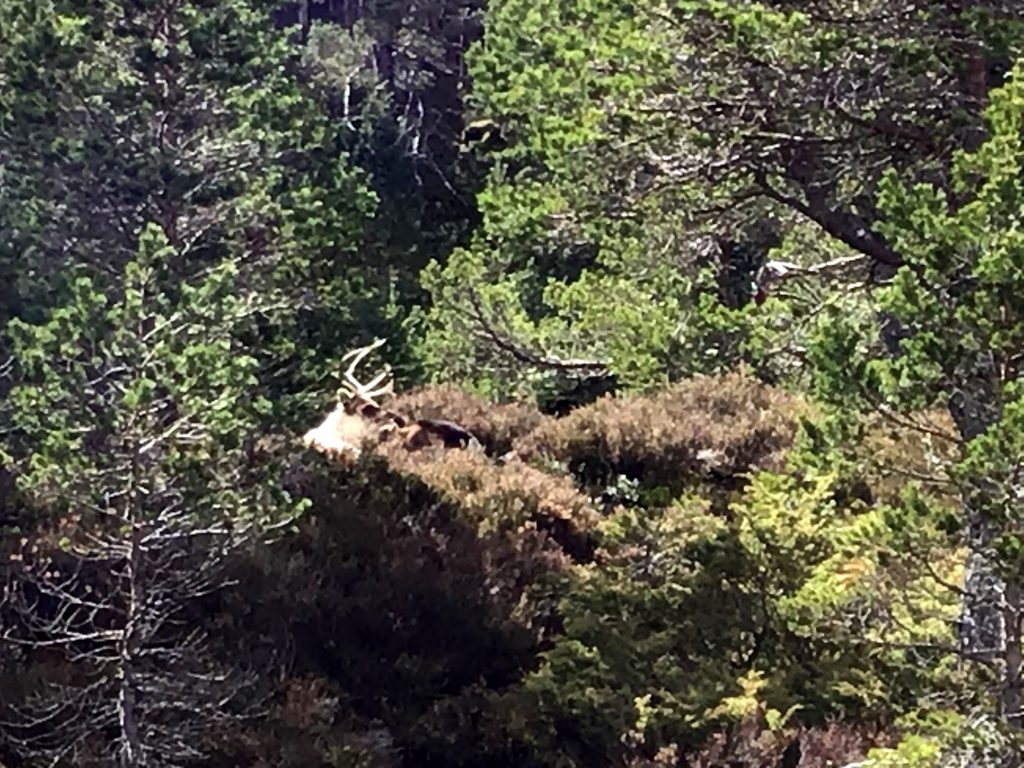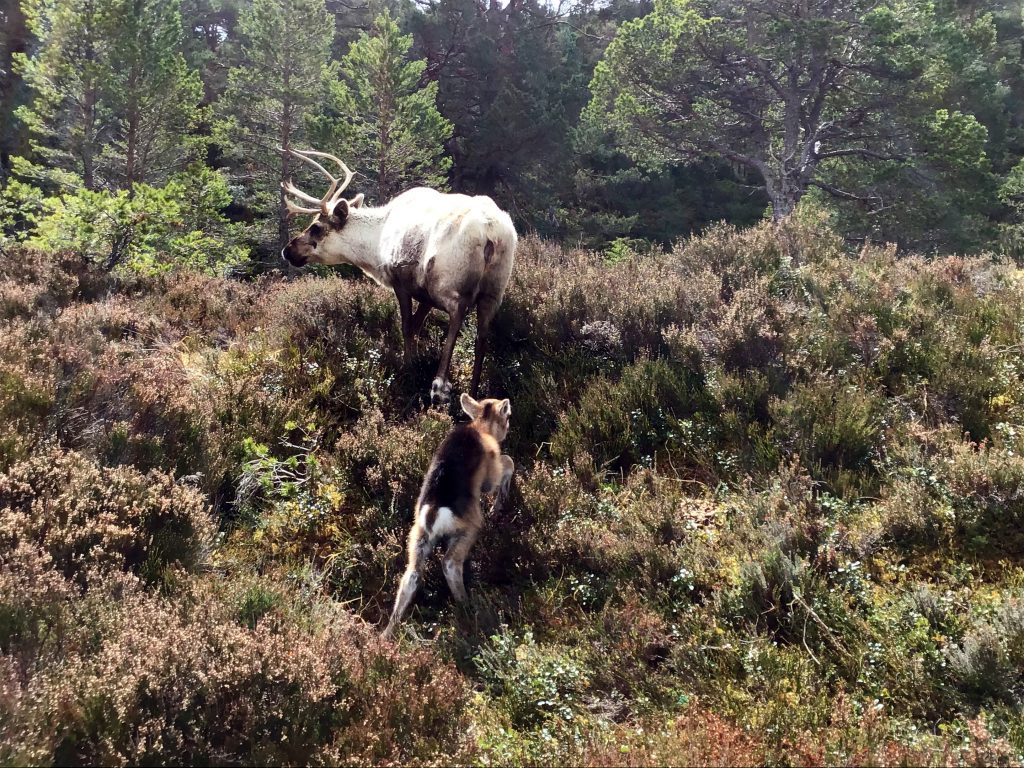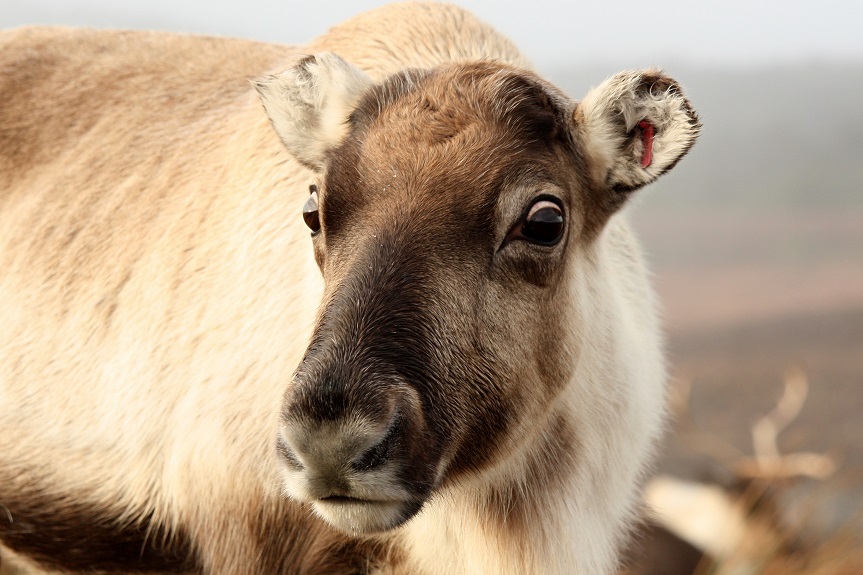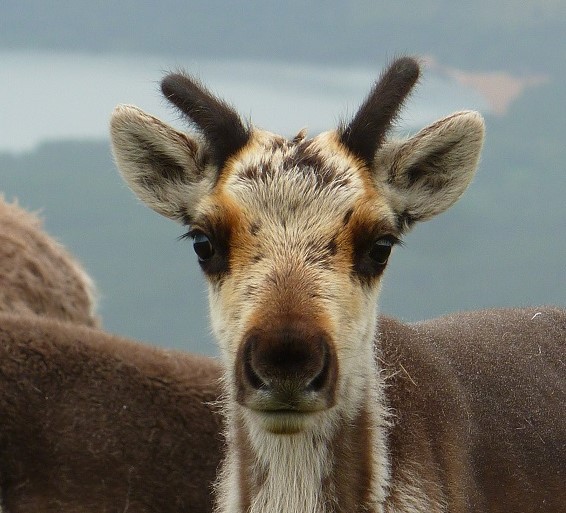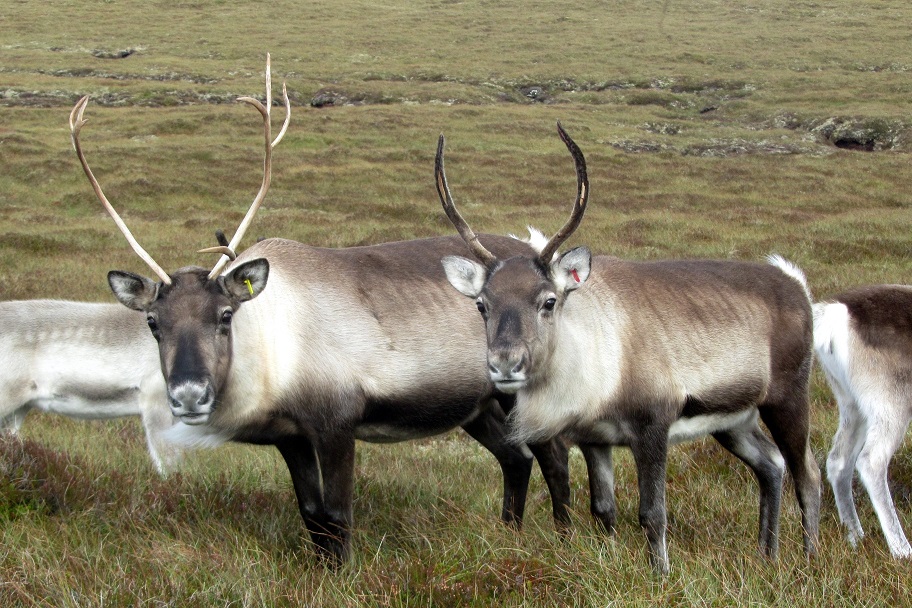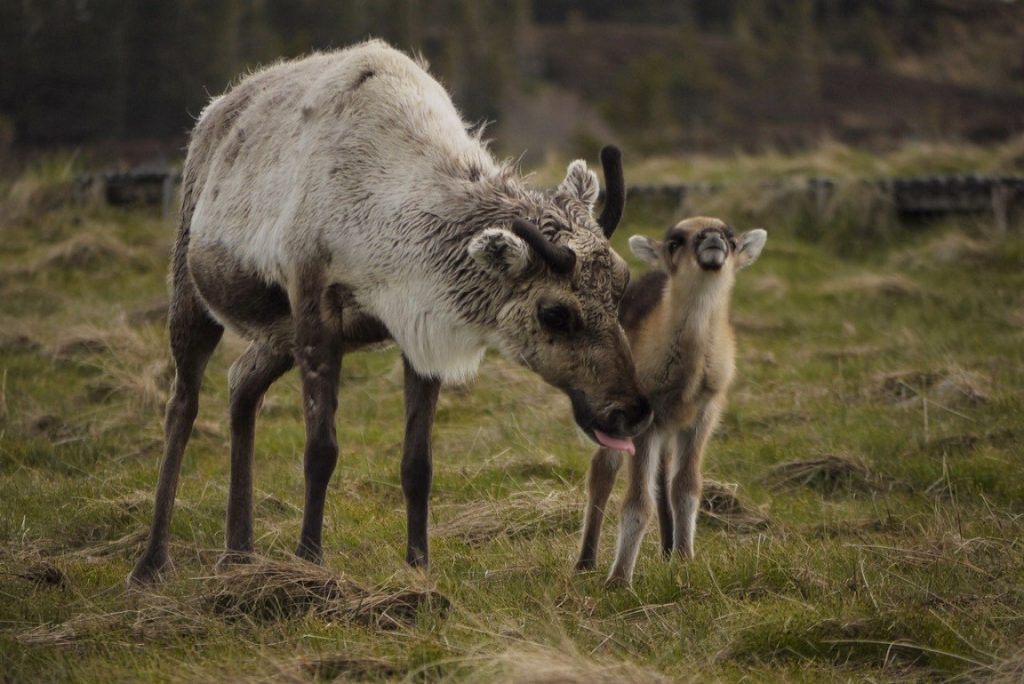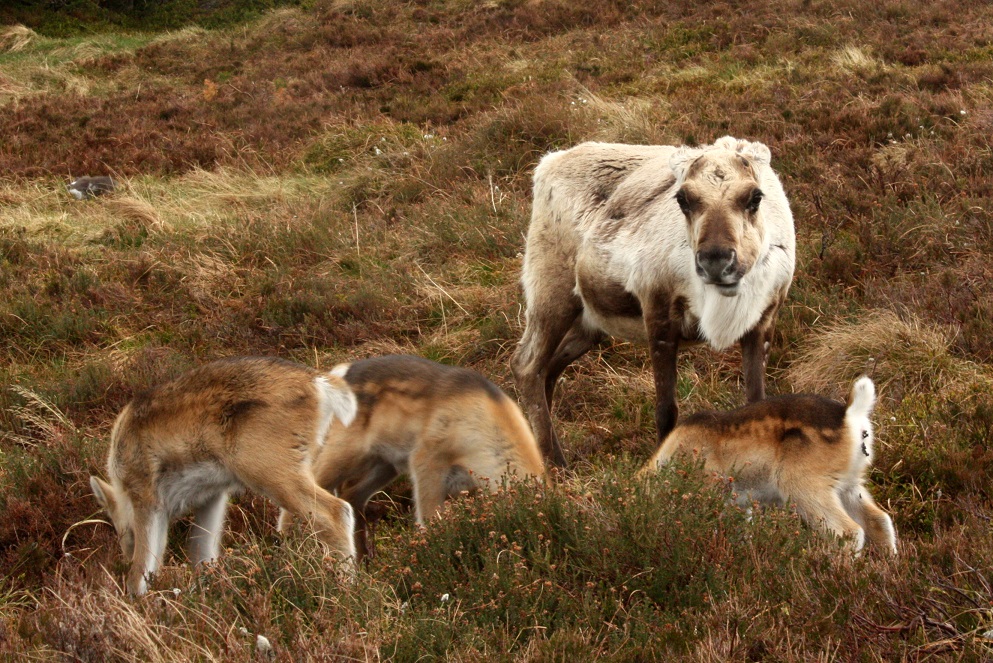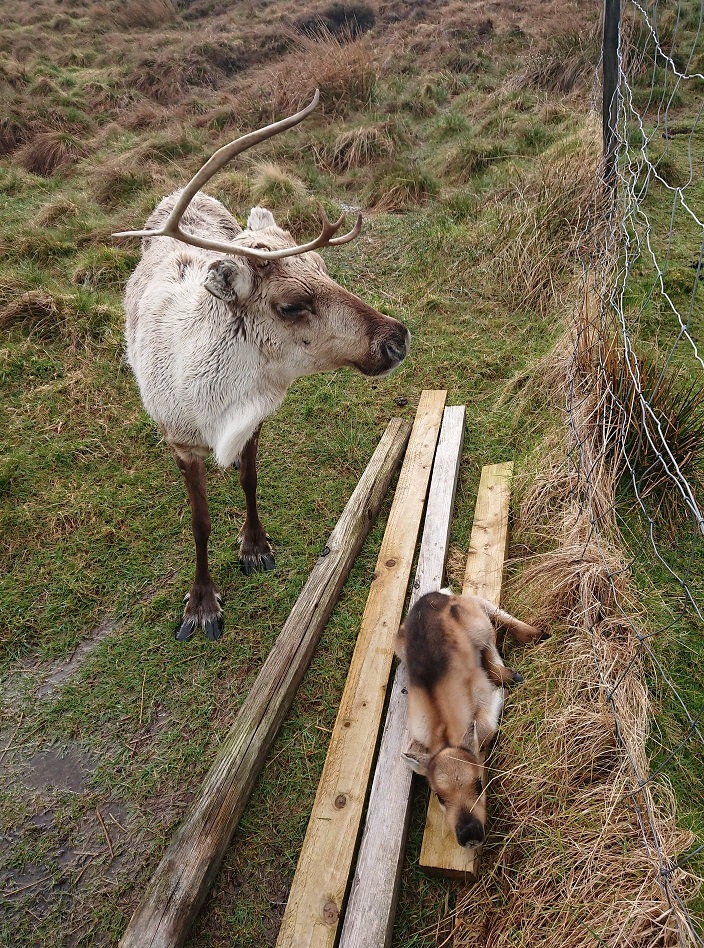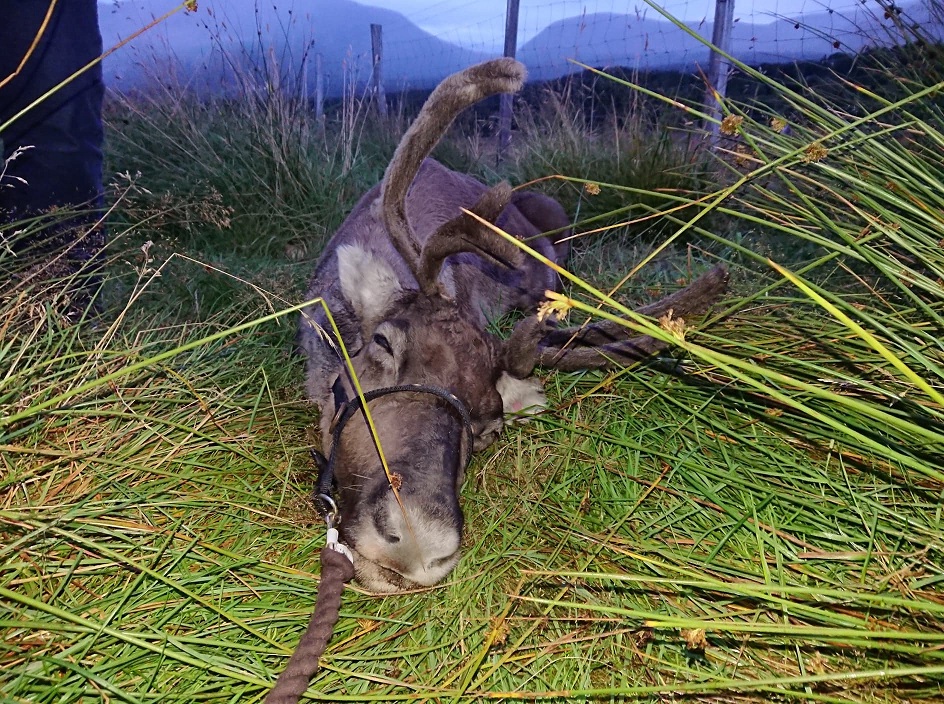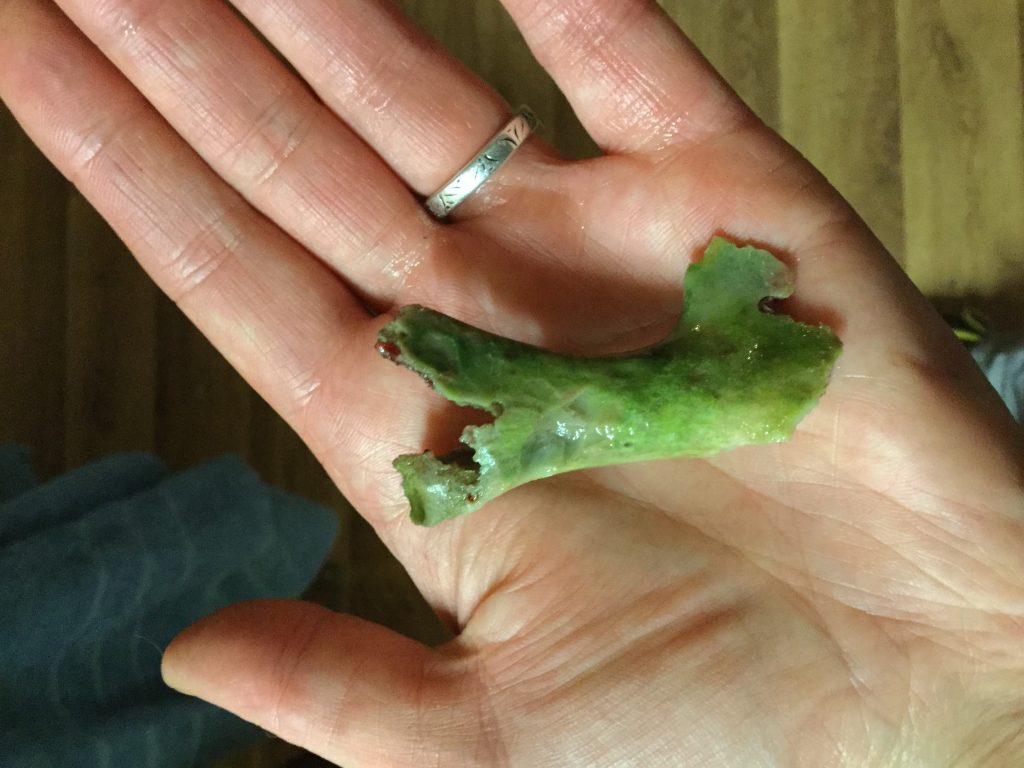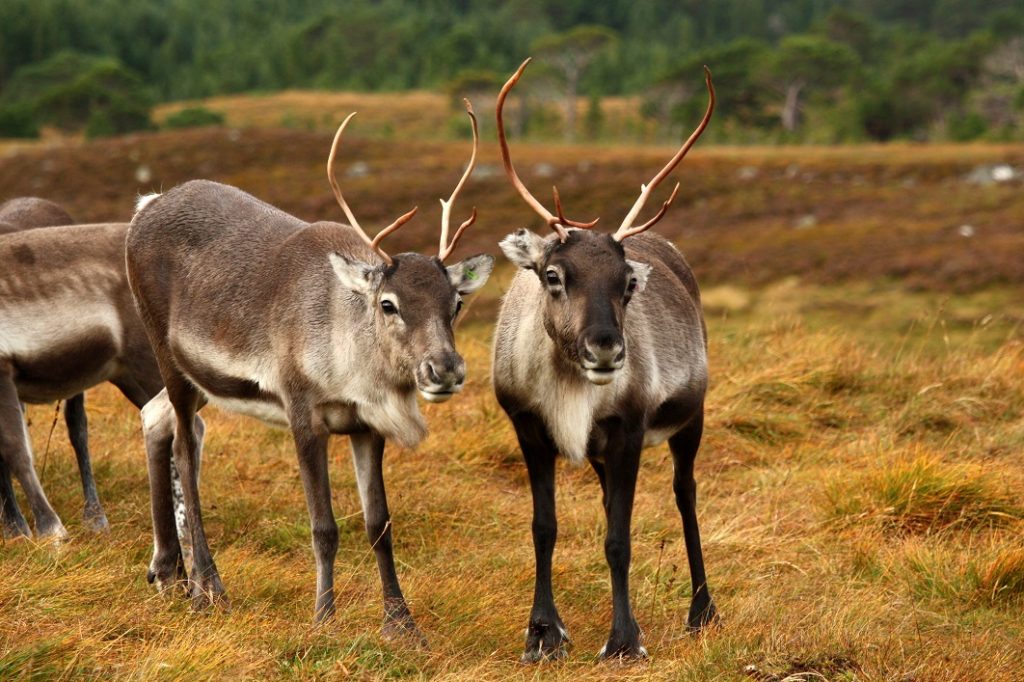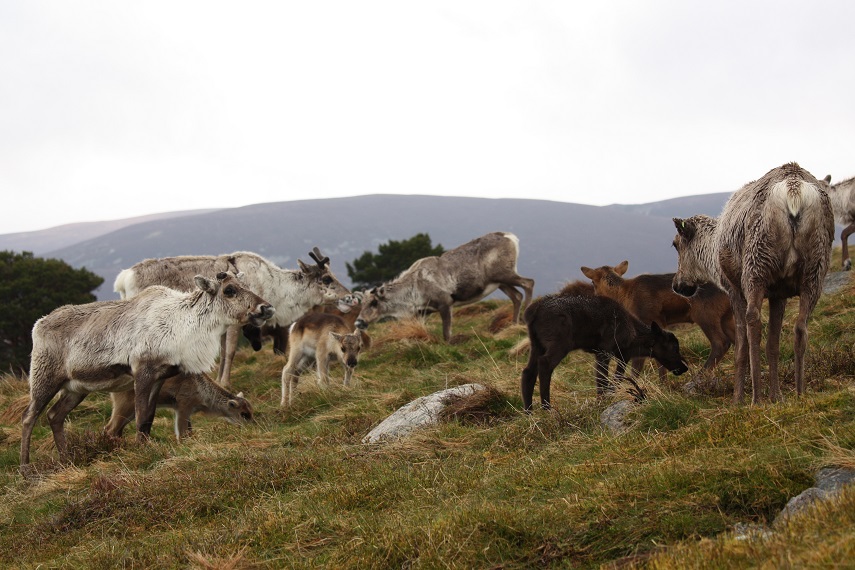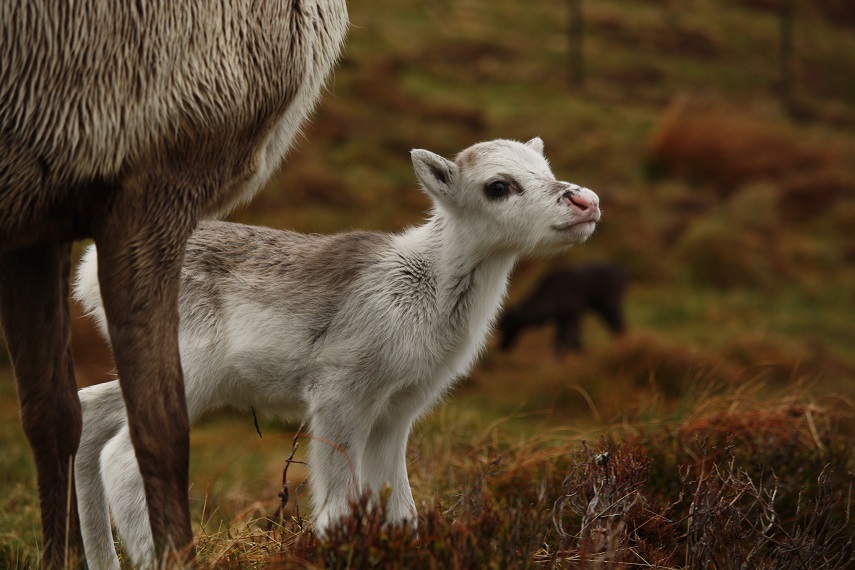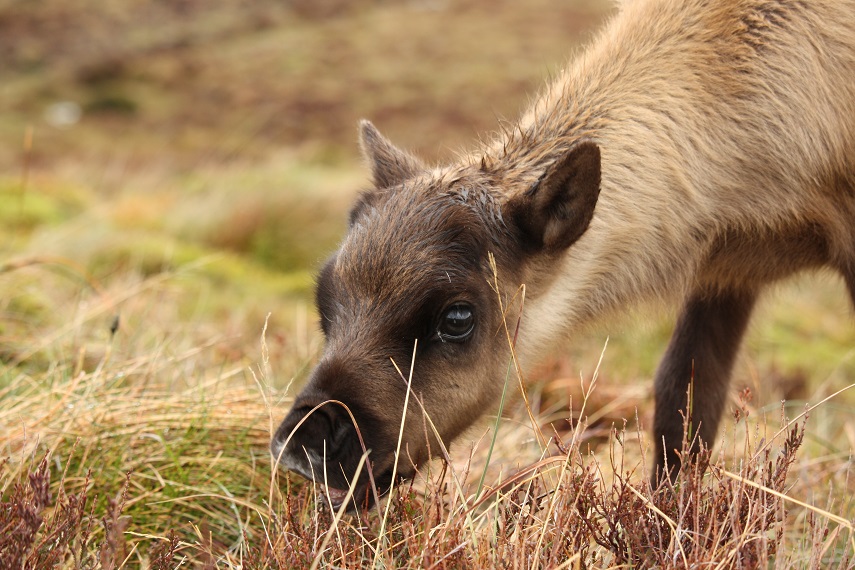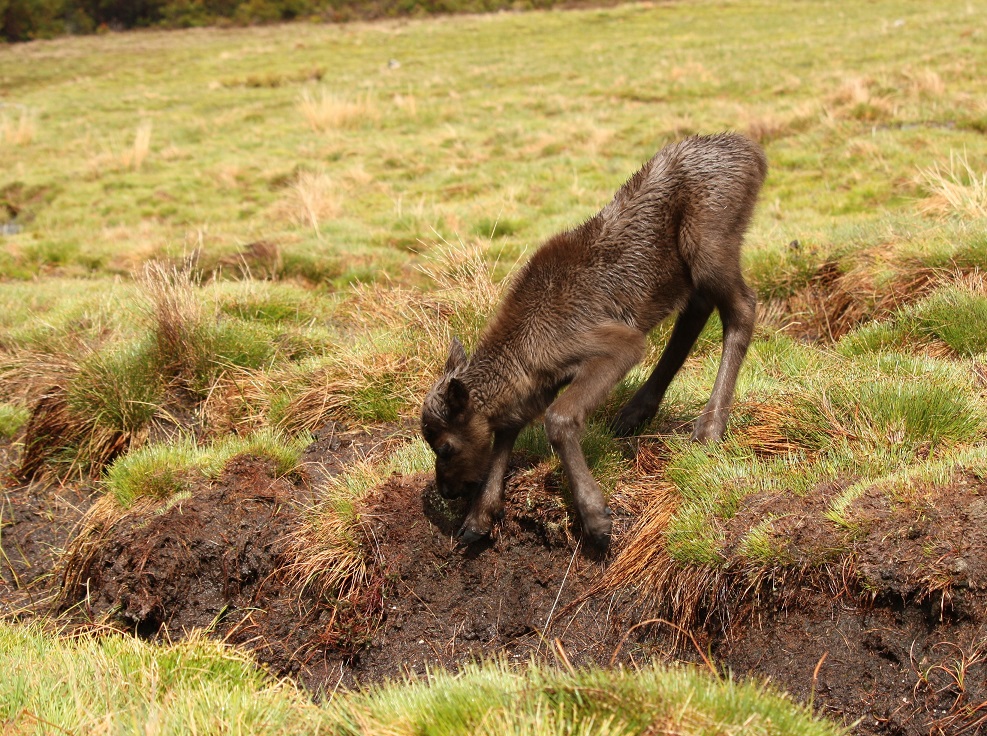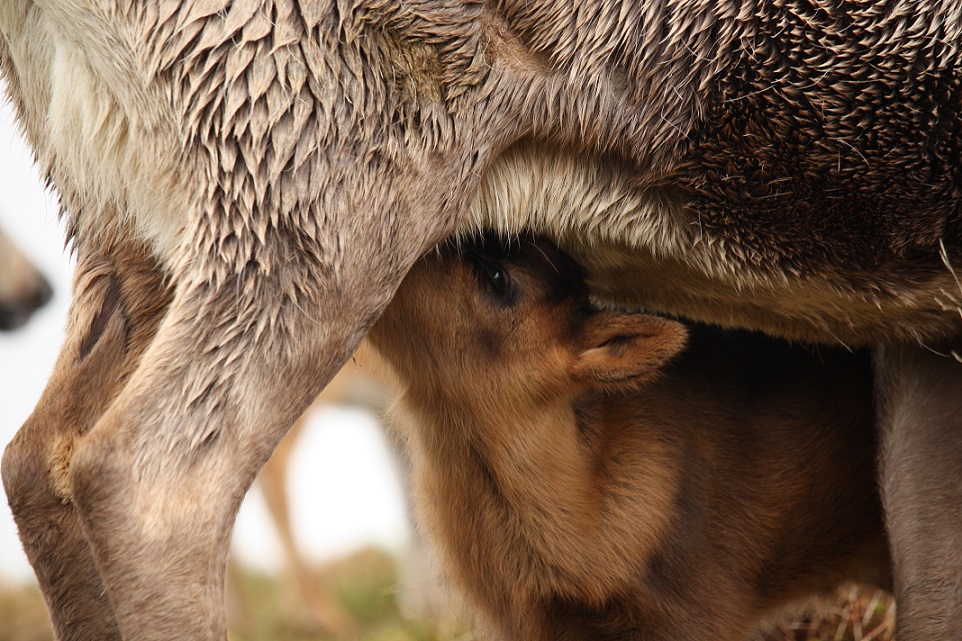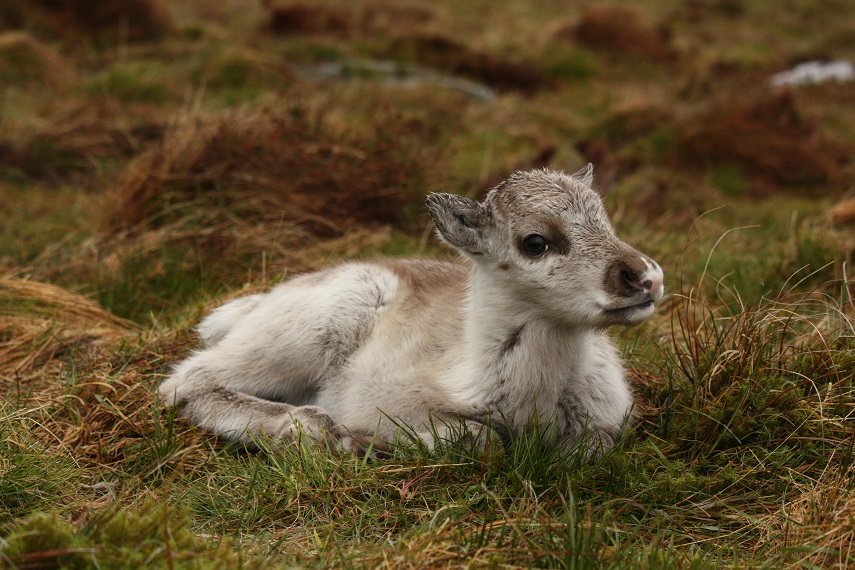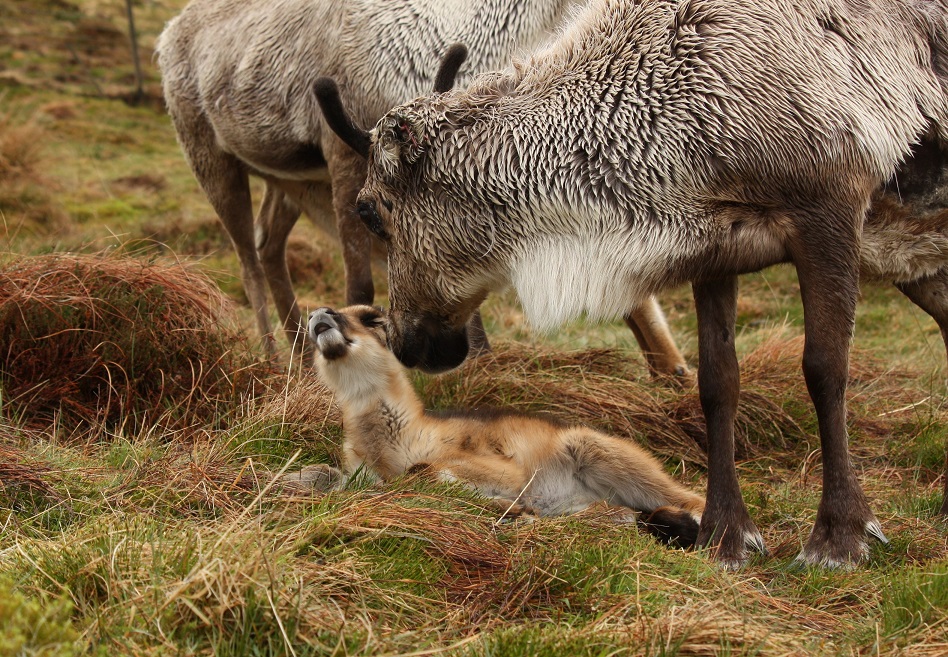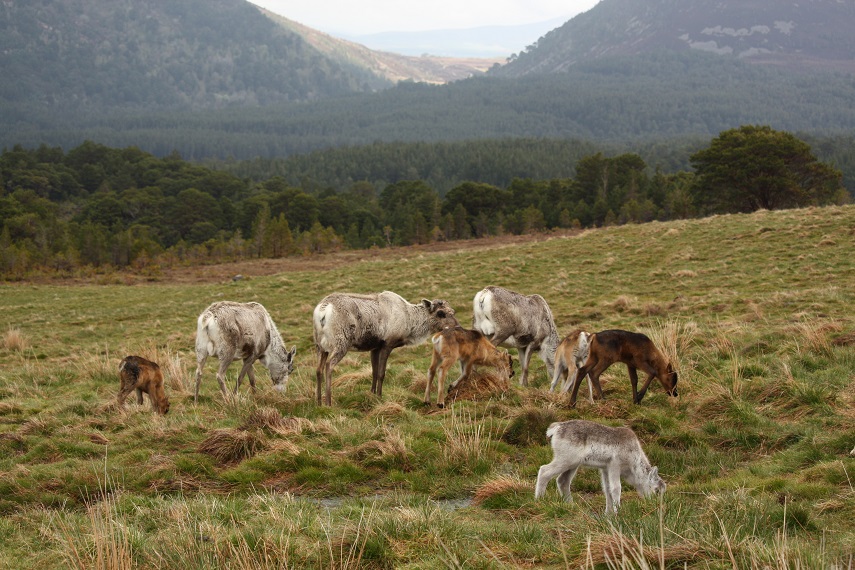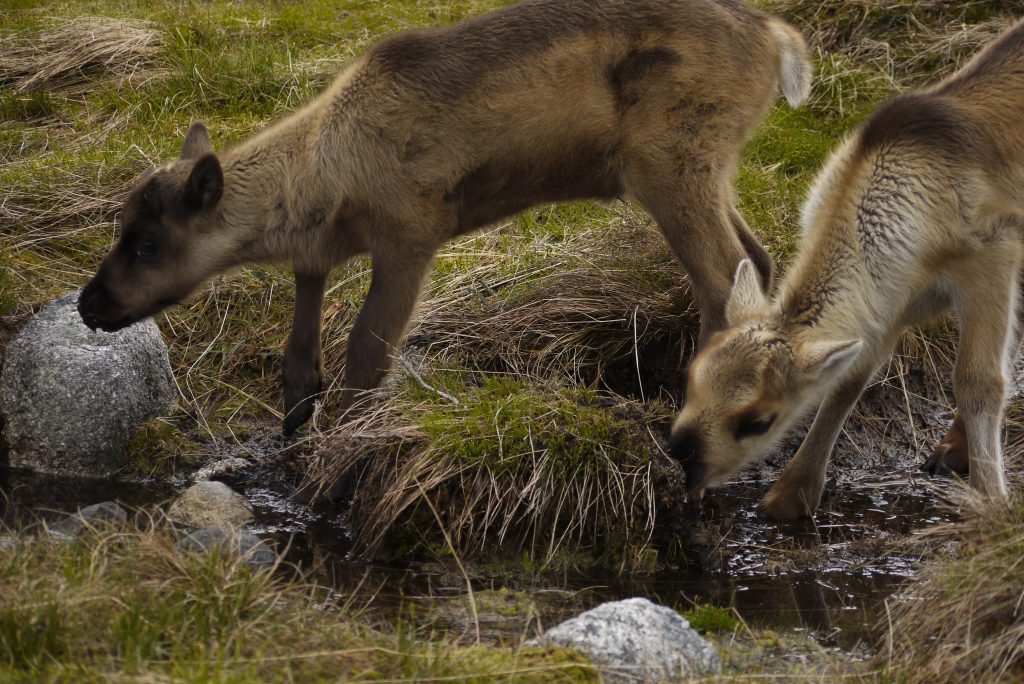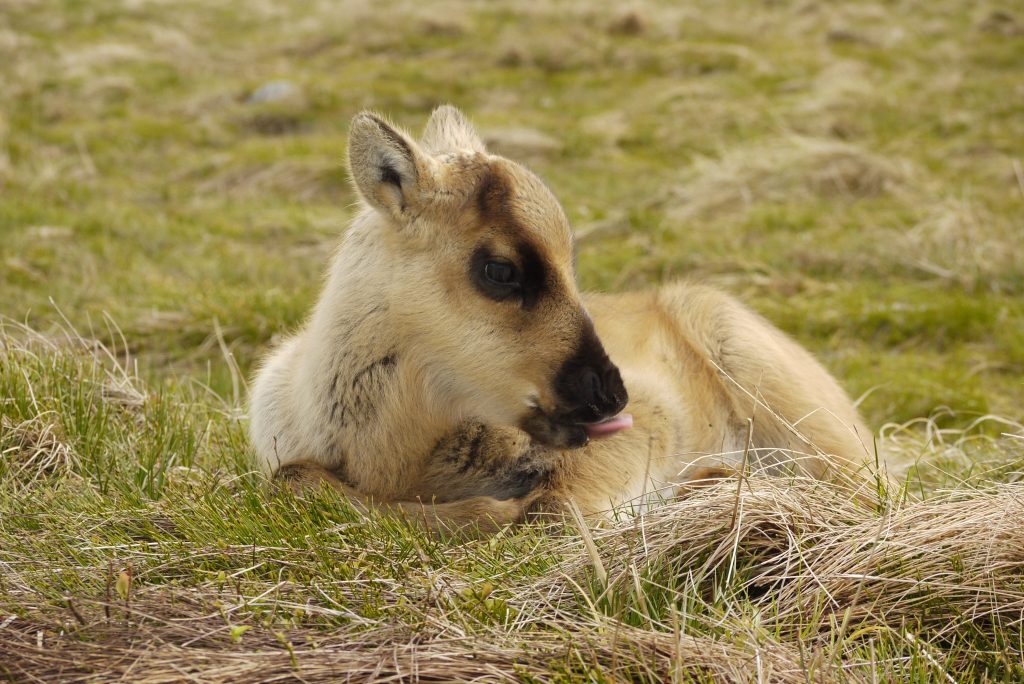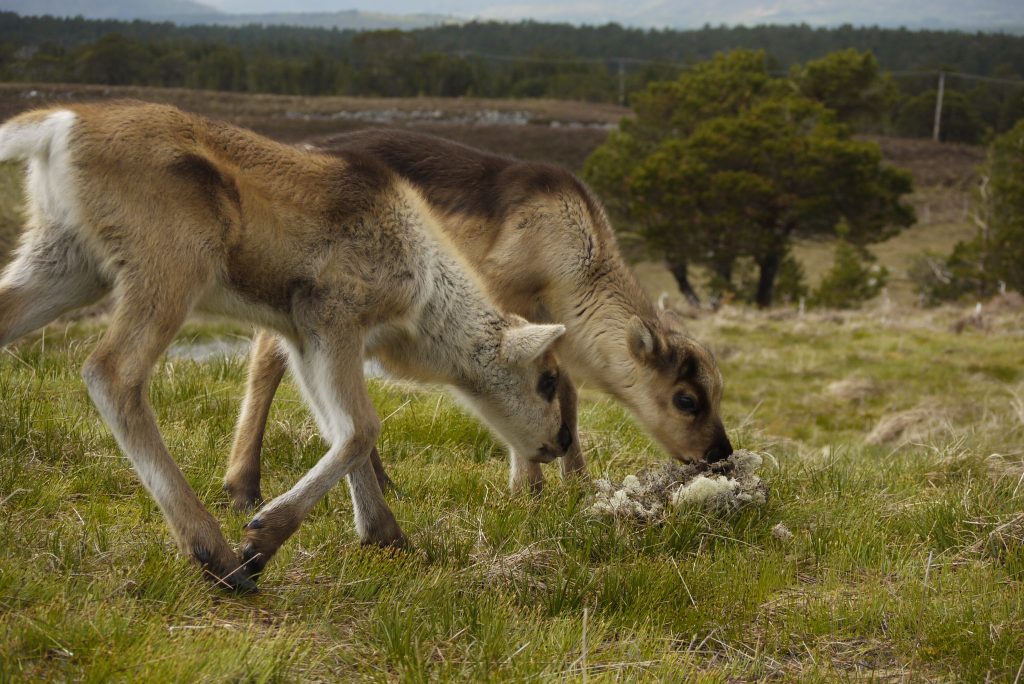Emm is one of our wonderful regular volunteers, and has written many blogs for us in the past. You can find out more about Emm by reading one of her previous blogs here: how reindeer herding changes me.

I visited the reindeer in April for 11 days which was over Easter. It was so brilliant seeing all the reindeer, herders and dogs again. I go and say hi to everyone at Reindeer House the day before I start. I went into the living room/kitchen and the room was empty. I started fussing Sookie the dog who was chilling in the armchair when I heard a sudden bleating noise . I had no idea where it was coming from then I realised it was coming from a big cardboard box. I peered in and saw a little lamb. It turned out it was a 2 day old lamb called Derren Brown (named after the illusionist). He is a Soay Lamb who was found without his mum in the field at Tilly’s farm. The herders were hand-rearing him with bottle-feeds. When I bottle-fed him, Fraoch the puppy licked him and cleaned the milk away from Derren’s face.
Most of the daytime, Derren went into Reindeer House’s garden and had a little pen. He was allowed out of the pen if someone was in the garden with him. The dogs were really good with him and I am sure he thought he was a dog. Derren chased the dogs and also loved to chase people’s feet. When we had lunch in the garden or we were just out in the garden and people saw a lamb running around with the dogs, they were so surprised and amazed. They asked loads of questions and took lots of photos and videos. Some even thought he was a baby reindeer. One day Derren helped me hoover Reindeer House and pack the Christmas cards and when I was doing feed mixing, Derren was trying to climb on the bags. He followed us around everywhere.

Over the 10 days I was helping out there were a lot of fun and interesting things I shared with all the herders.
Finding the Free-rangers
Most of the 11am hill trips were to the free ranging females who were free in the Cairngorm Mountains. We had different visit sites depending on where the reindeer were found in the morning. There were also a group of reindeer in the hill enclosure and if the 11am trip was full, we ran another trip to the hill enclosure reindeer in the afternoon. I enjoyed doing some of the talking parts on the hill trips and in some afternoons, the herders did talks in the paddocks.

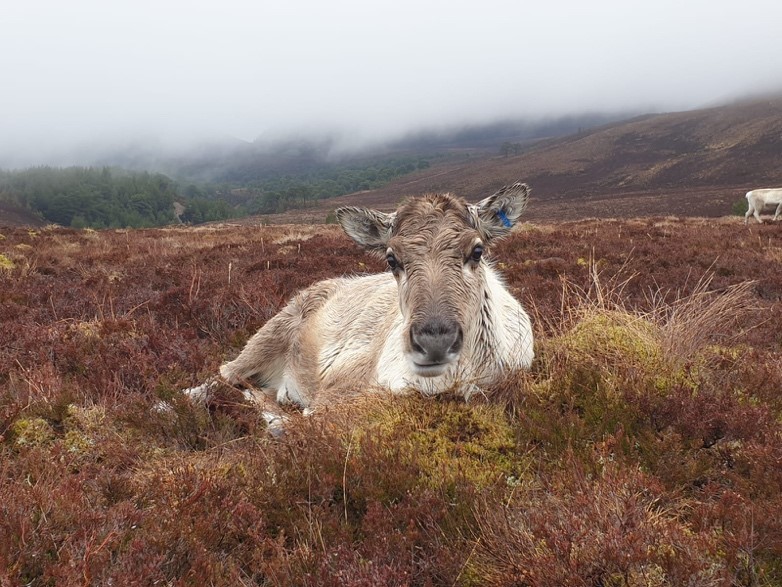
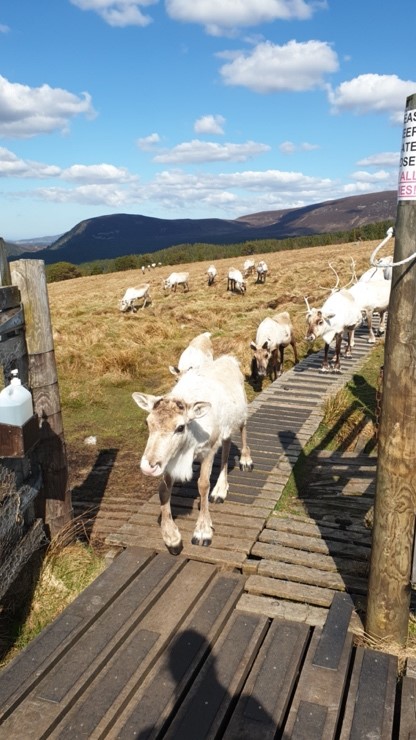
Each morning, 2 herders went to find the free-ranging reindeer in the Cairngorm Mountains and brought them down to a suitable visit site for the visitors. It could be a long and steep walk for them as the reindeer like to go high up and also over the hills.
One morning, I was lucky enough to go and find the reindeer with Ruth and Harry. We had a steep climb and when we got to the top, we located the reindeer. Ruth tried to get the them to follow her with her food bag and calling them but they wouldn’t follow her so she put Ochil on a head collar and started walking down the steep hill to the suitable visit spot. The reindeer usually follow as they like to stay together as a herd. Meanwhile, me and Harry were pushing the reindeer from the back and made sure they all followed.
When we got to the visit spot, we let the calves (who were nearly 1) eat from the food bags. Ruth and Harry took the calves temperatures to make sure they weren’t brewing something as they are still building up their immune system. We fed them and Trilby had 2 antlers when she was feeding from the bag but after we fed them, and were counting them, I noticed Trilby had lost an antler. We all looked for her antler which we found.
We then realised there was 8 reindeer missing as there should have been 68 but we had 60. We went around the reindeer identifying them to see who was missing. Ruth was ticking off all the names. It was like doing a school register! After the Hill Trip, the reindeer wandered off but were found later on the ski road so Lisette led them away from the road. Later that day Harry was in the hill enclosure and spied the 8 missing reindeer from this morning so Lotti went out to the 8 and led them into the hill enclosure as in a few days time the rest of the free-rangers were going to go into the hill enclosure ready for the calving season.

Heavily Pregnant Reindeer
It is an exciting time of year to be up as some of the females are heavily pregnant. They have big tummies and it is amazing to think that a tiny reindeer calf is growing inside them. Hen showed me on a few reindeer where their udders were starting to show. Reindeer have fluffy udders. When they start to grow, the fur is a triangle shape under their bottom.
All the herders have a calving bet each year. Each herder chooses a reindeer who they think will calve first. I chose Scully.
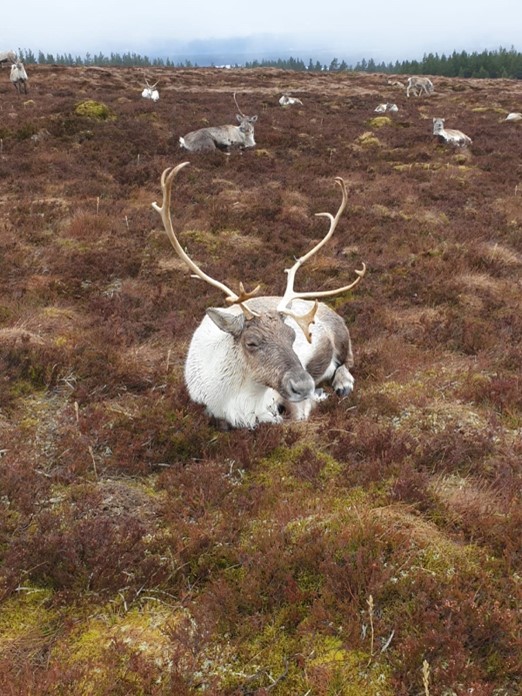
Leading Reindeer
One day, Ruth went to the farm to get some more reindeer for the hill enclosure and paddocks. Lulu and Gazelle went into the paddocks. Me, Ruth and Amy took Morse, Clouseau, Diamond, Aztec, Kiruna and Cannellini up to the hill enclosure. I led Clouseau and Cannellini. A dog off the lead behind them spooked them and Ruth told the dog’s owner to stay as far back as possible as reindeer think dogs are wolves and are very scared of them. When we lead the reindeer to and from the hill enclosure, we have to keep an eye out for dogs as it is a public path. When they spotted the other reindeer in the hill enclosure, it made them jump.
On another day, me, Fiona and Zoe took Celt and Spartan from the paddocks to the hill enclosure. I led Celt. On the way back, we took Aztec and Morse from the hill enclosure to the paddocks and this time I led Morse. When we transport reindeer, we use a big animal lorry called Brenda. I think it can fit 8 reindeer in, depending on how big their antlers are. It has a partition inside it too.

The Adventurous Hill Trip
I did a hill trip on the free-range with Amy, Harry and Carol. We met the people in the carpark and we then realised the reindeer were on the path next to the carpark. They had made their way down the hill from the visit spot to the path next to the carpark. It was the first time that it happened to me.
Amy led the visitors up the hill with the food bag calling to the reindeer to follow her. Me and Harry herded the reindeer from the back. I was so focused with herding the reindeer that I fell into a knee-deep bog! My knees to my toes got soaked and I had to empty the bog water out of my wellies after I climbed out of it. Eventually we managed to get the visitors and reindeer to the top of the hill where the visit was happening.
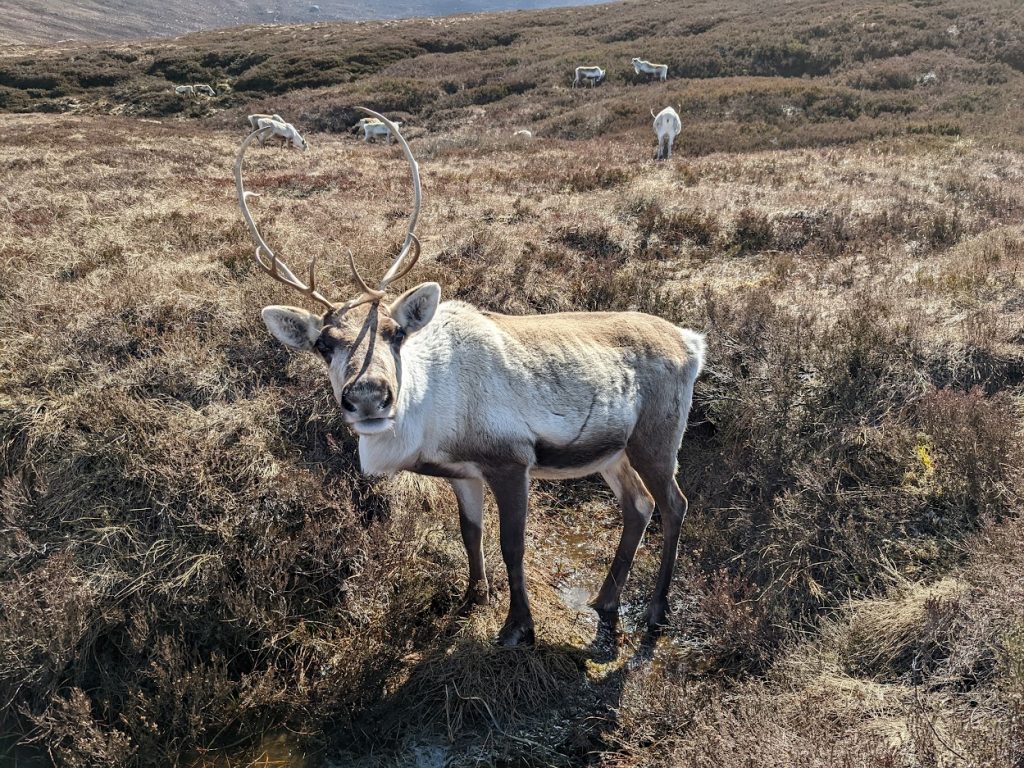
The Reindeer Herding Badge
There is a very special badge going around the herders. Whoever has it passes it on to someone who they think deserves it. This could be a herder doing something very special or doing something above and beyond.
I did some Christmas card packing (6 cards in a pack). I did it on and off through the time I was there. When I was a way through packing, I realised some people had been packing 2 designs and some people had been packing 3 designs. And they were all mixed up. So I went all through the packs sorting them into 2 designs and 3 designs. I was so busy and worried about it I missed a hill trip. Ruth who had the special badge thought I deserved it for my work and gave it to me and I was so happy I got it.
I passed it onto Lotti a few days later as on a hill trip Lotti thought Holy Moley’s wee was a different colour so she sat with her for ages until she went for another wee. Me and Amy left her on the free-range sitting by Holy Moley. It was very important to check if it was the right colour or if it had any blood in it. If it has blood in it, it means the reindeer could have Red Water Fever caused by a tick bite. Luckily she was fine.
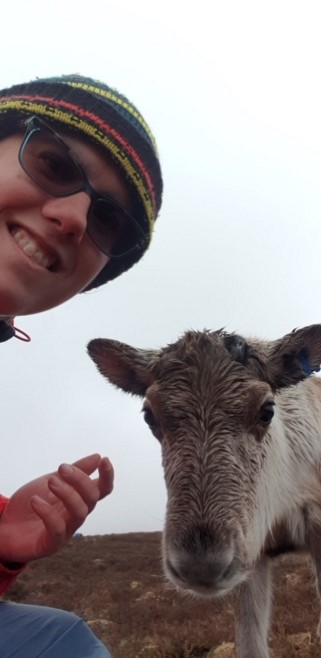
To be continued! Look out next week for the second installment of Emm’s blog.
Emm

